One of the most popular attractions in Vientiane is Wat Xieng Khouane Luang, more commonly known as the Buddha Park. Built in 1958 by the priest-shaman Luang Pu Bunleua Sulilat, it features over 200 sculptures inspired by both Buddhist and Hindu traditions.
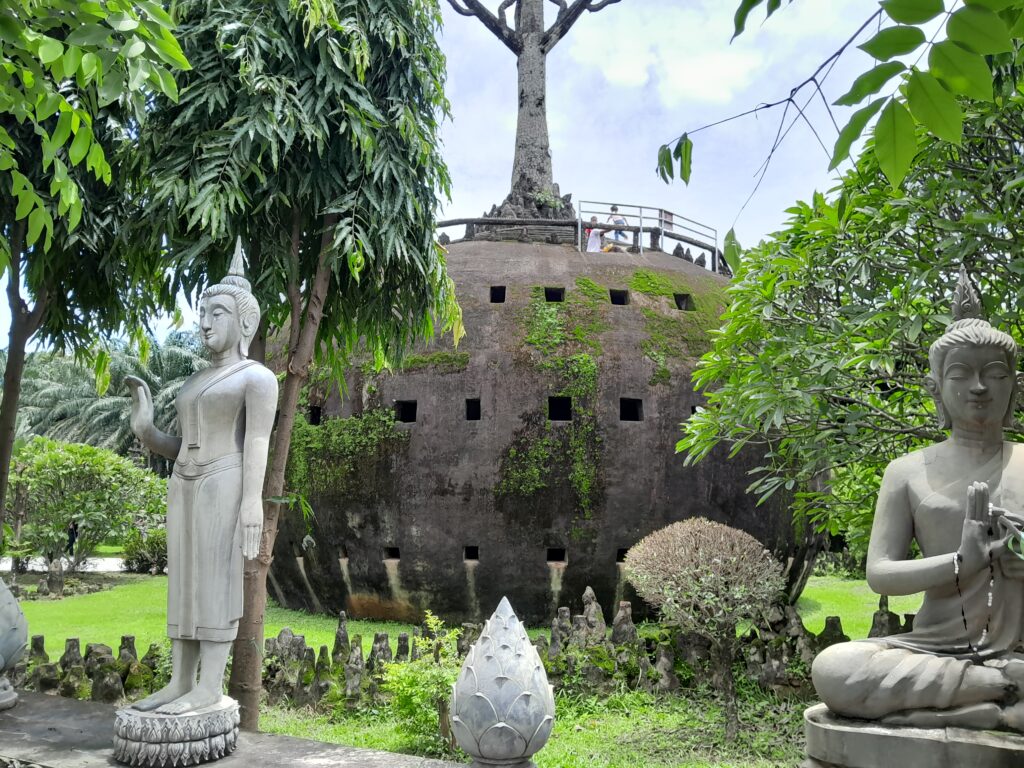
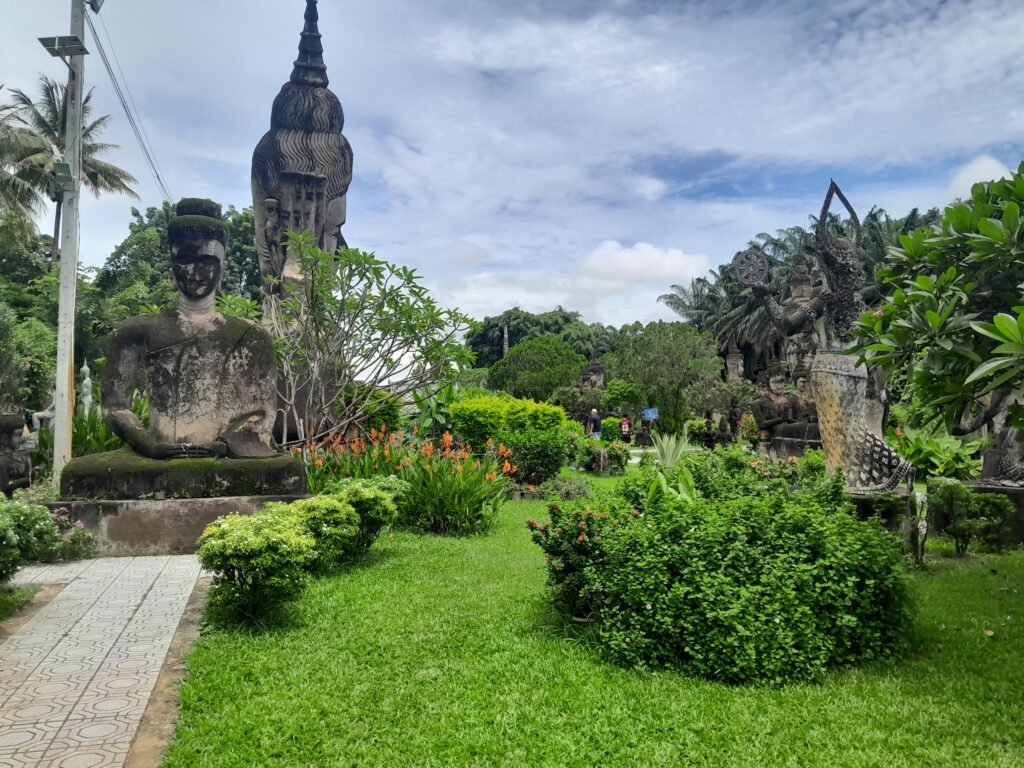
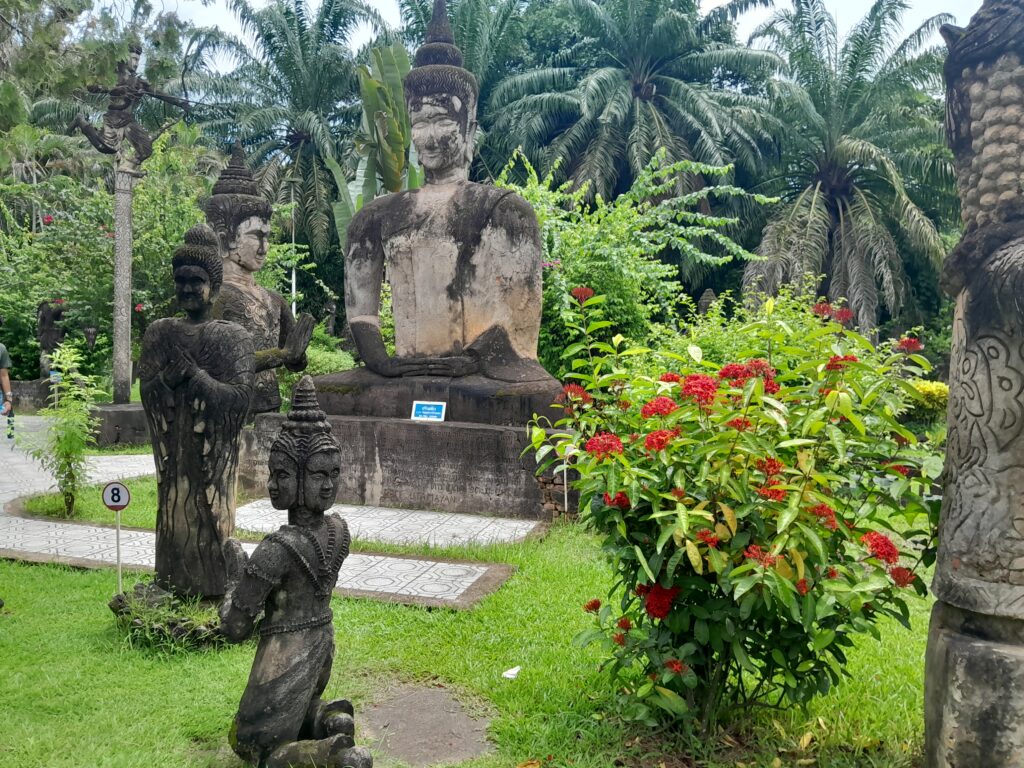
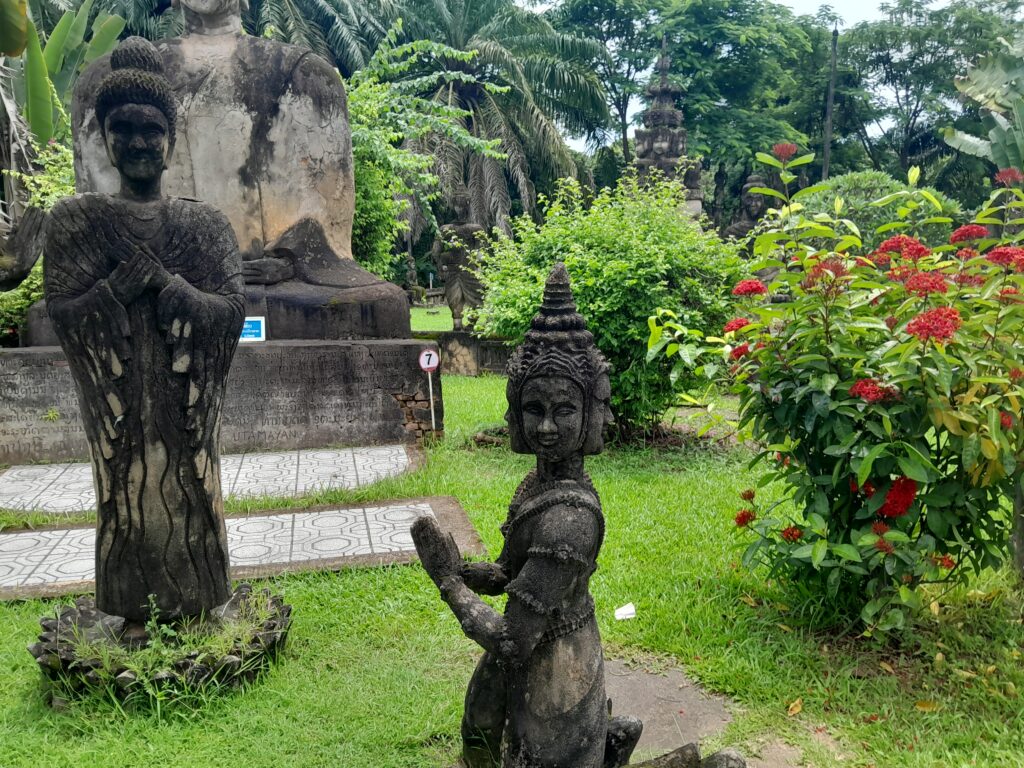
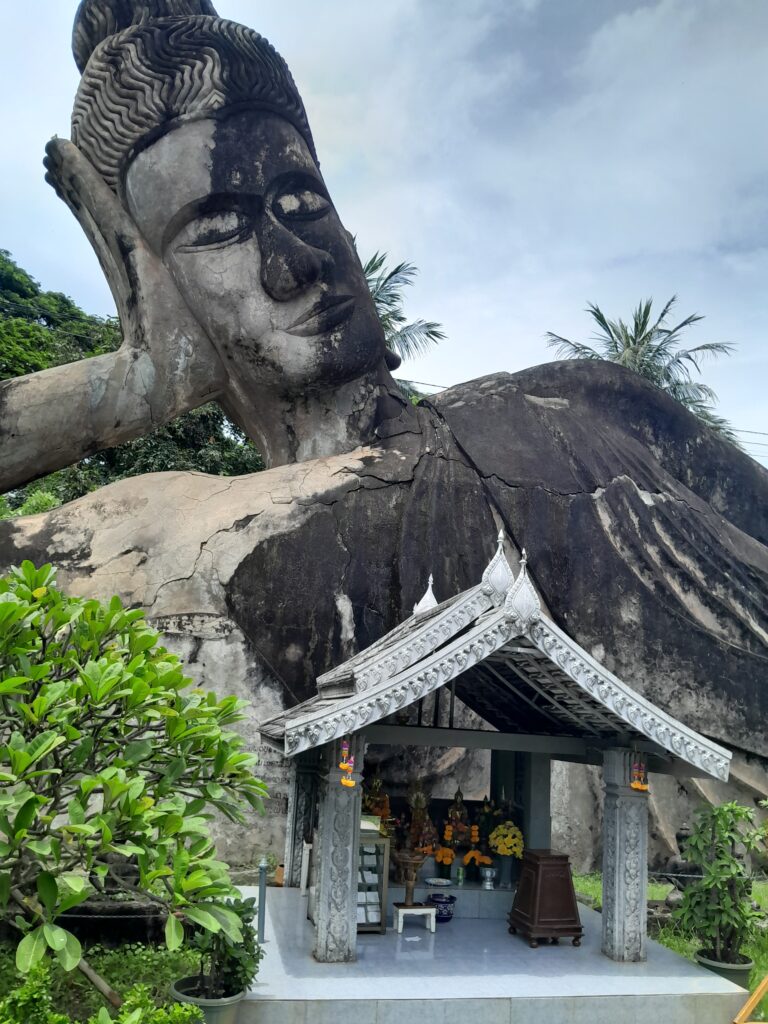
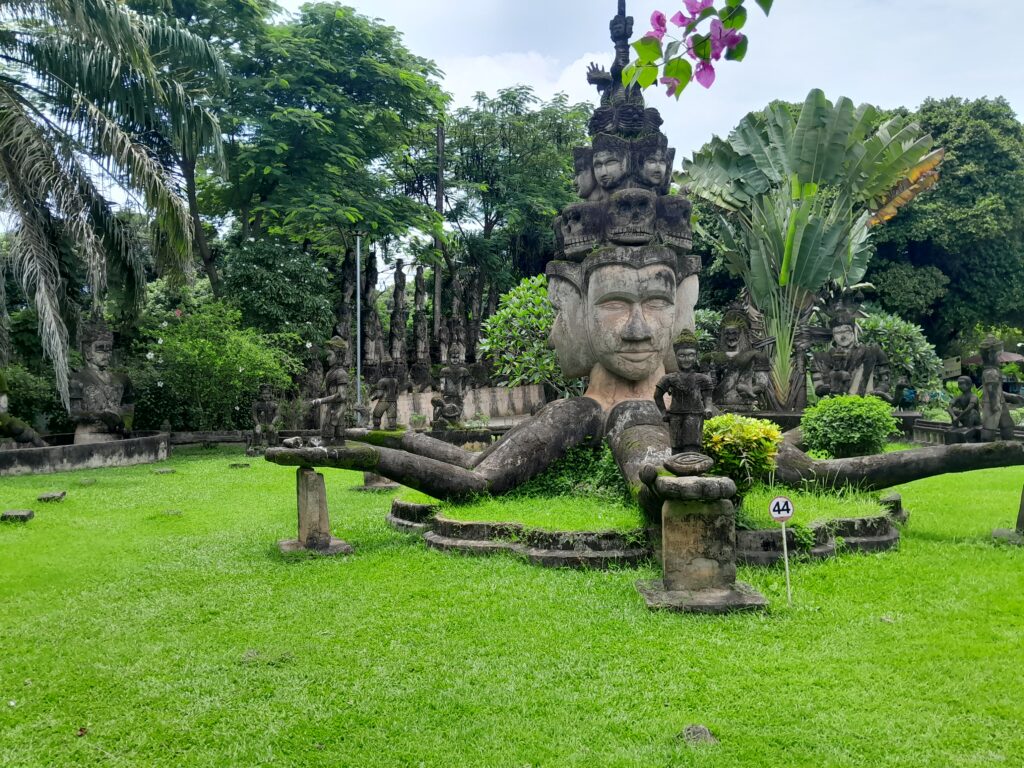
The Buddha Park sits on the outskirts of Vientiane, close to the Mekong River. The cheapest way to get there is to take the No. 14 bus, which conveniently also stops at the Friendship Bridge, the main border crossing to Thailand. If you’re planning to cross the border, you could also check out Sala Keoku, a similar park built by Luang Pu after he fled during the Laos Civil War.
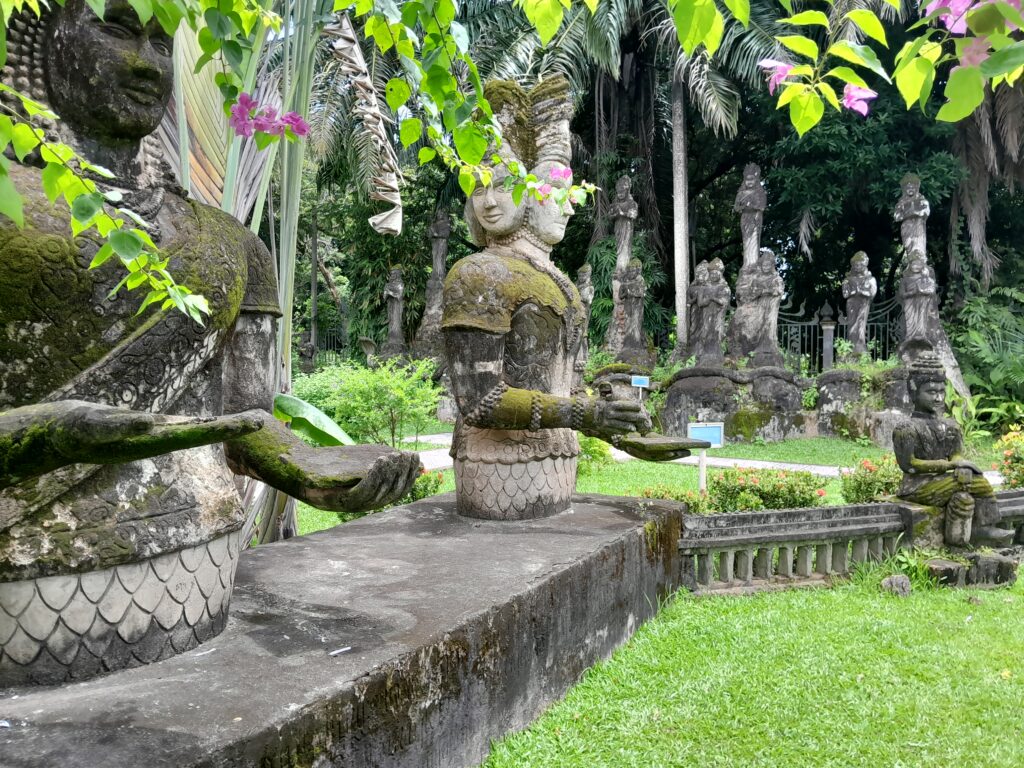
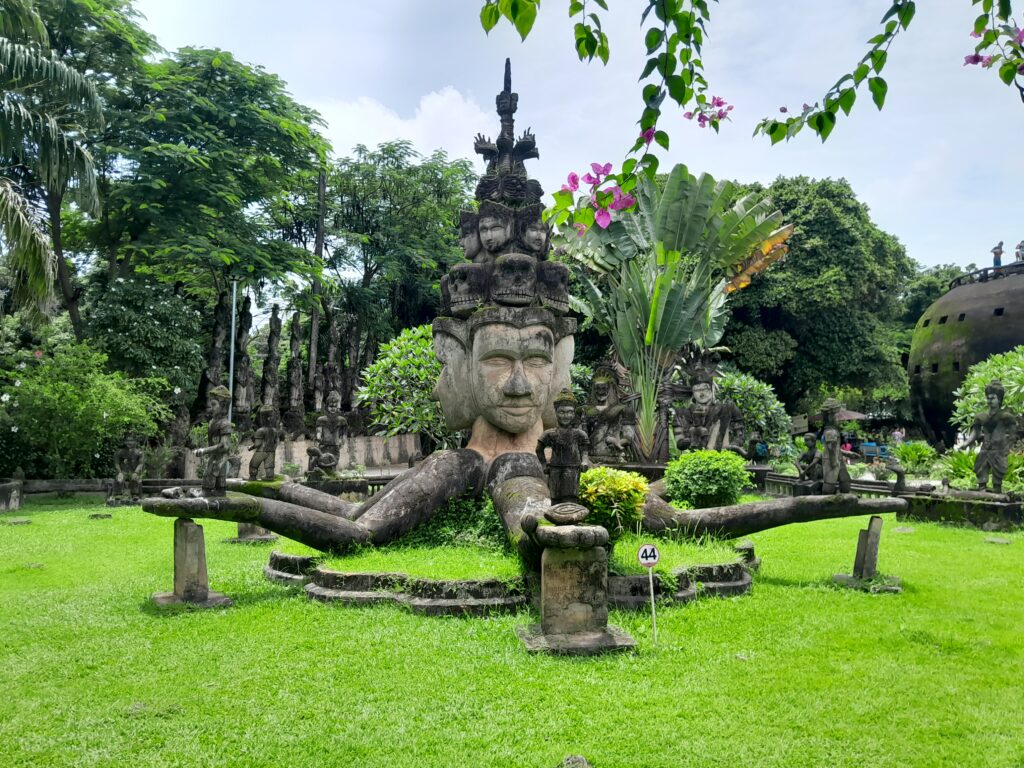
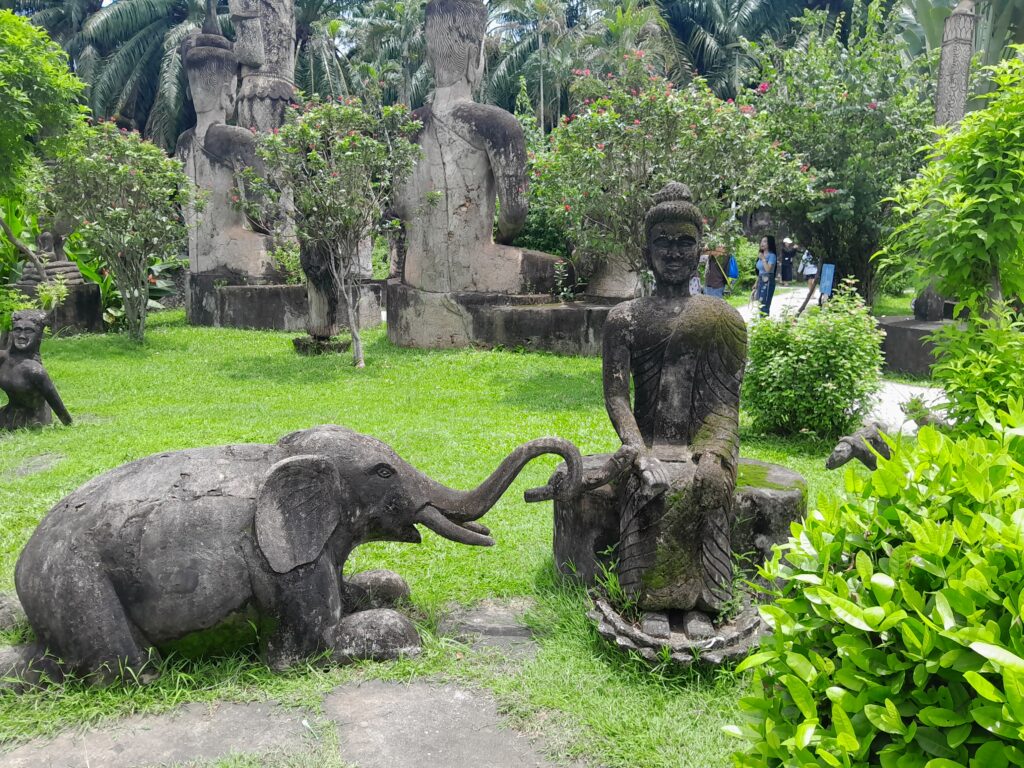
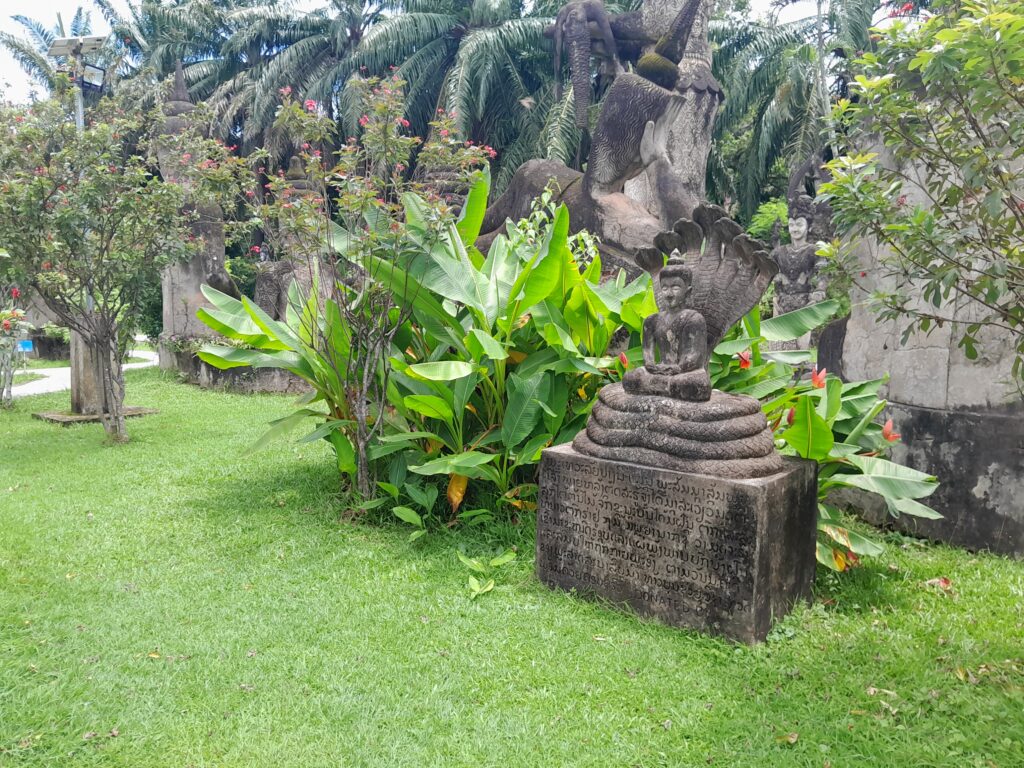
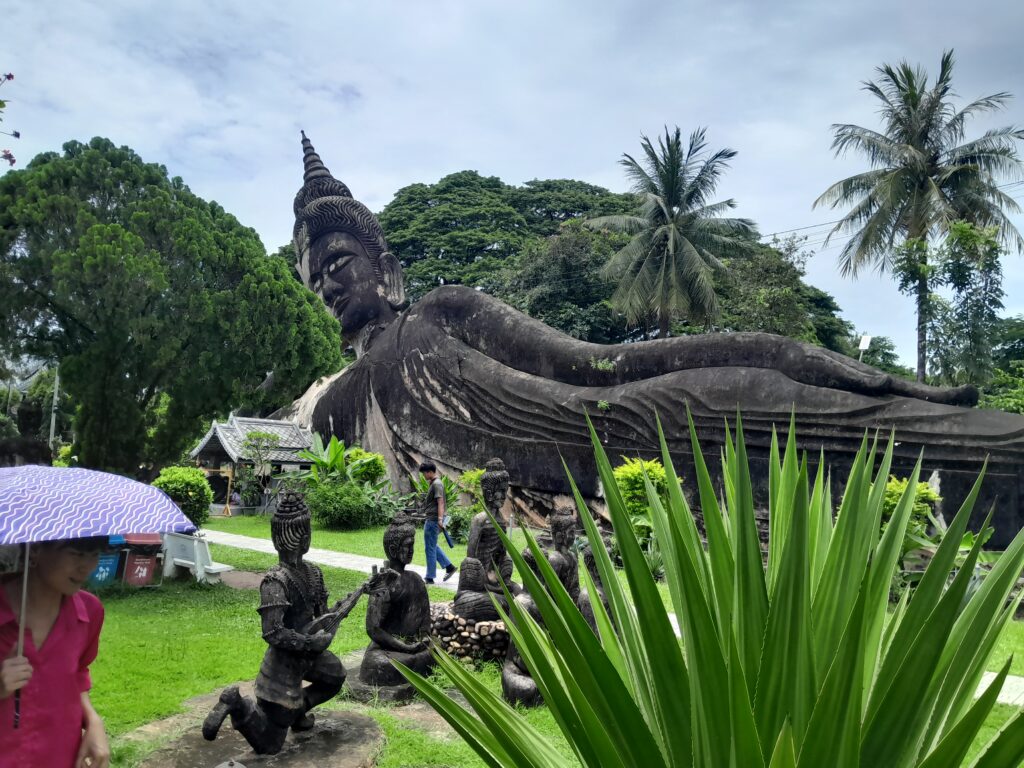
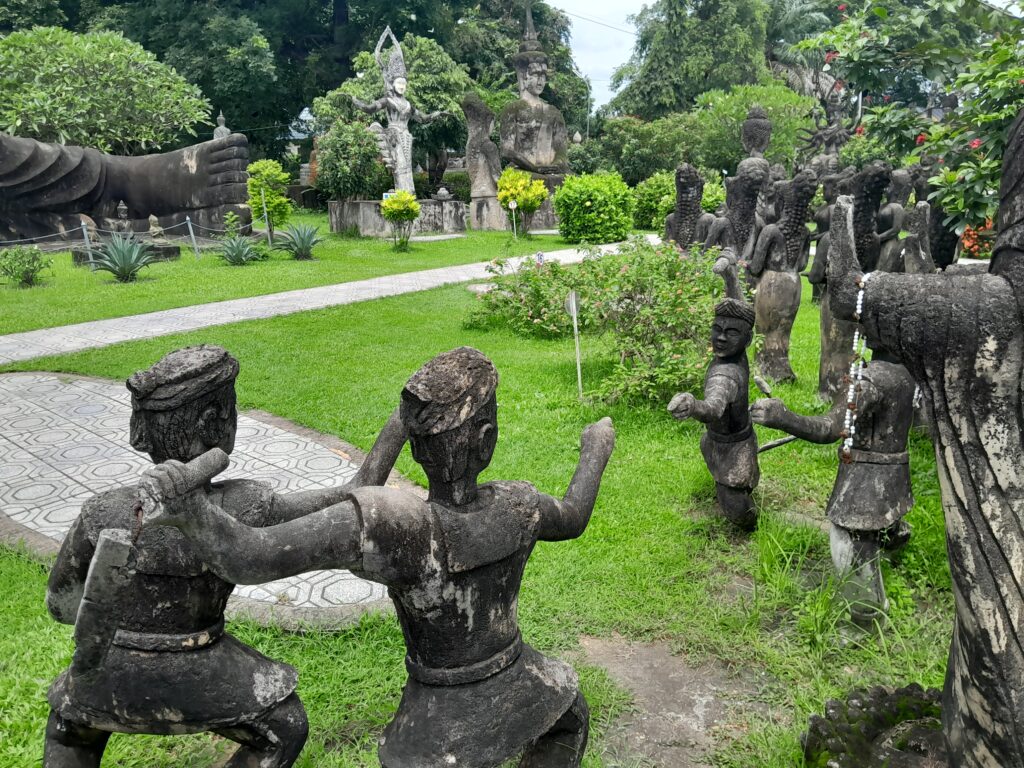
While it isn’t a temple, many still consider the Buddha Park a sacred site. There’s no formal dress code enforced at the gate, but it’s still best to dress respectfully, with shoulders and knees covered, out of cultural sensitivity.
Statues
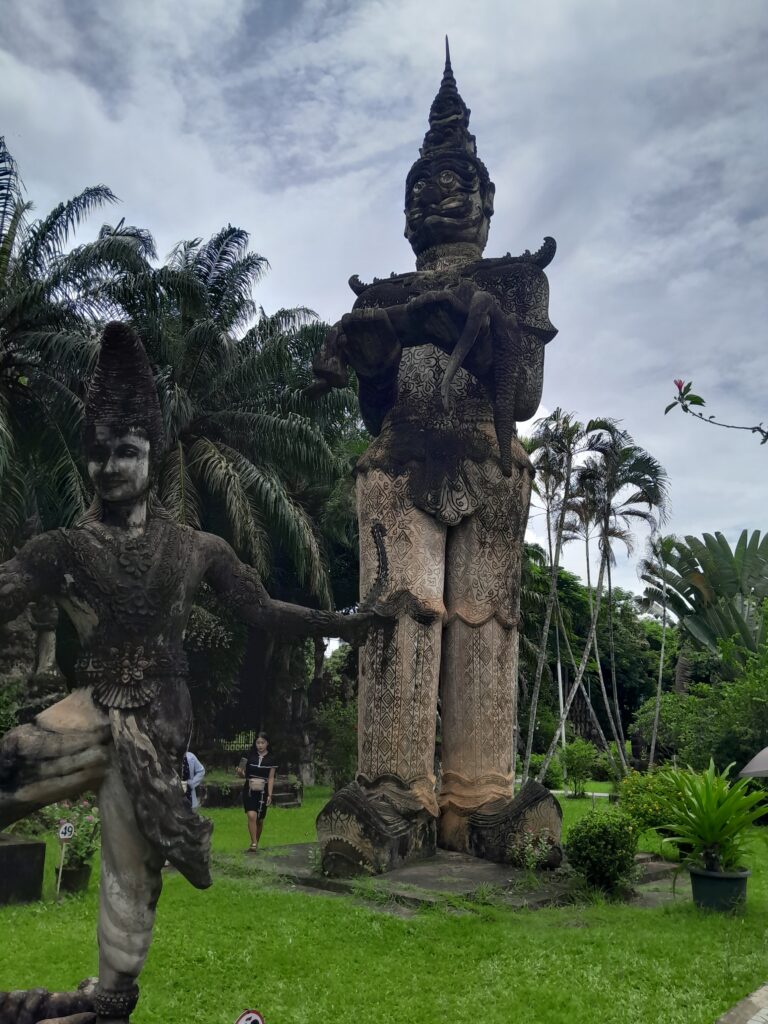
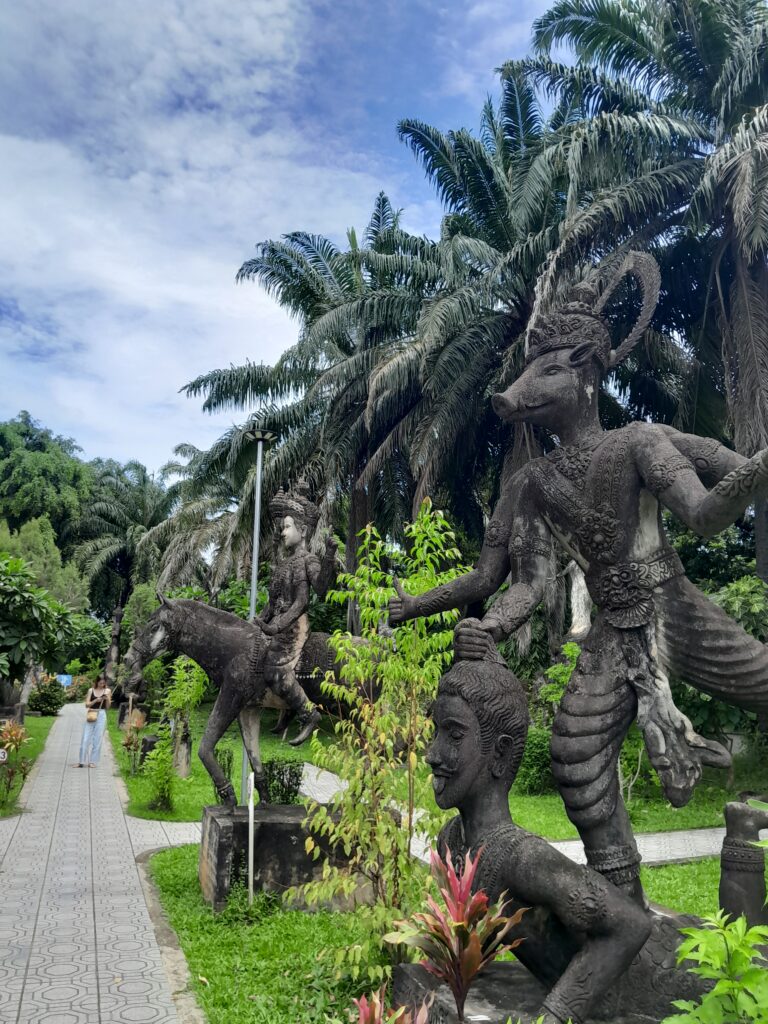
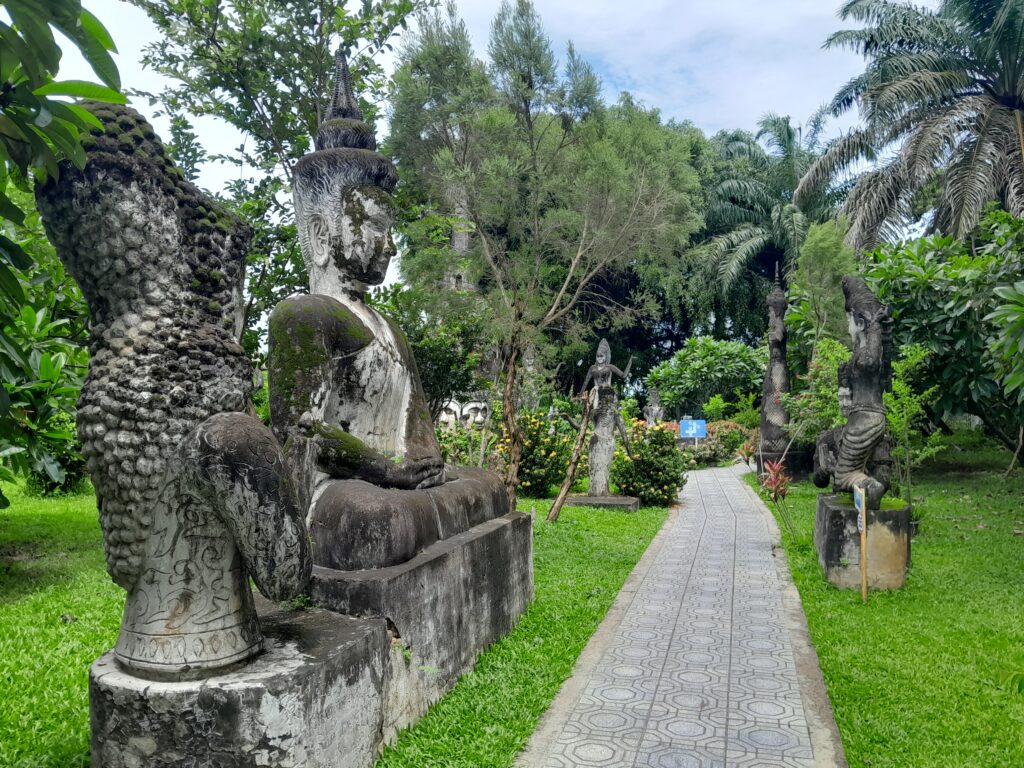
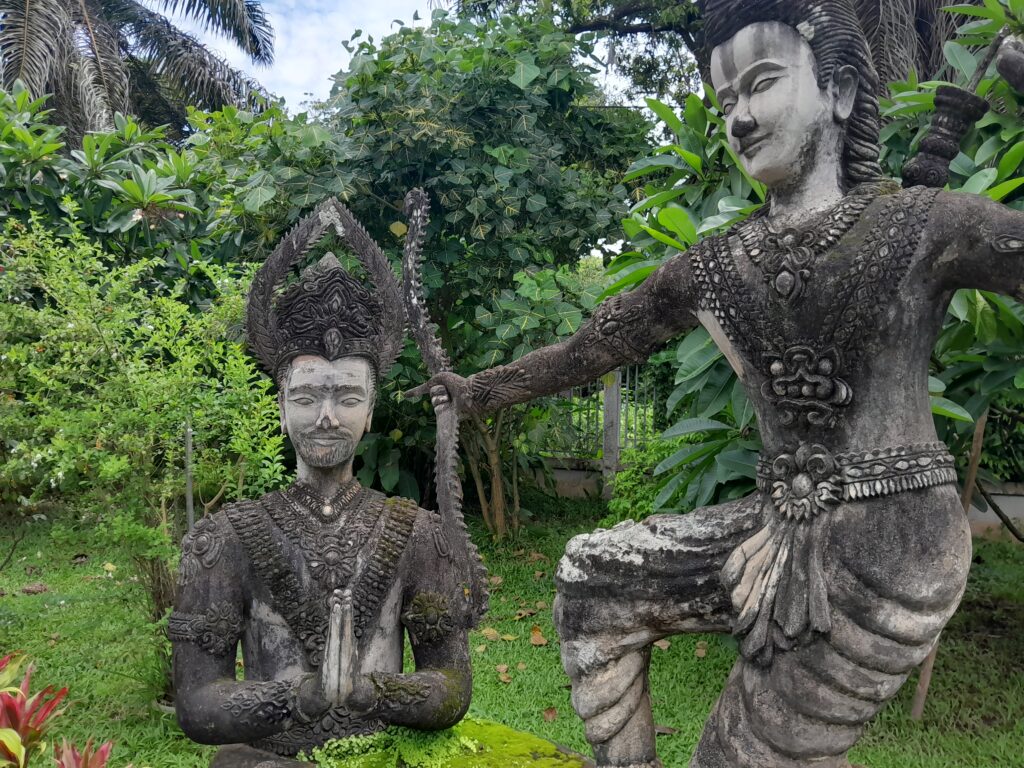
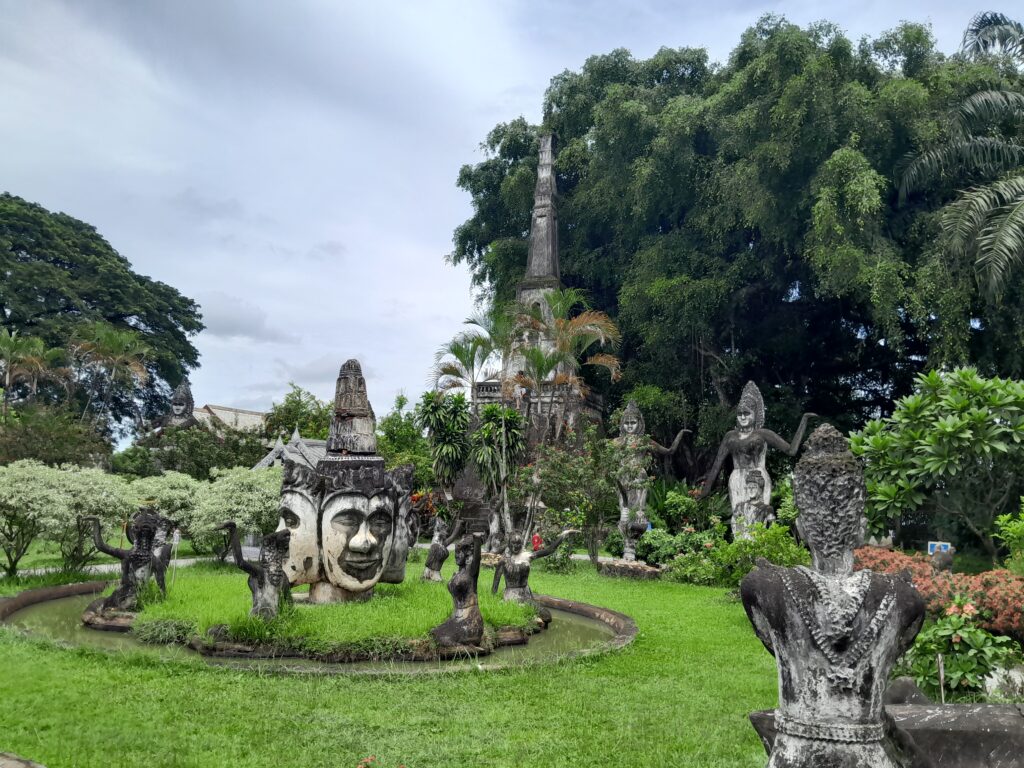
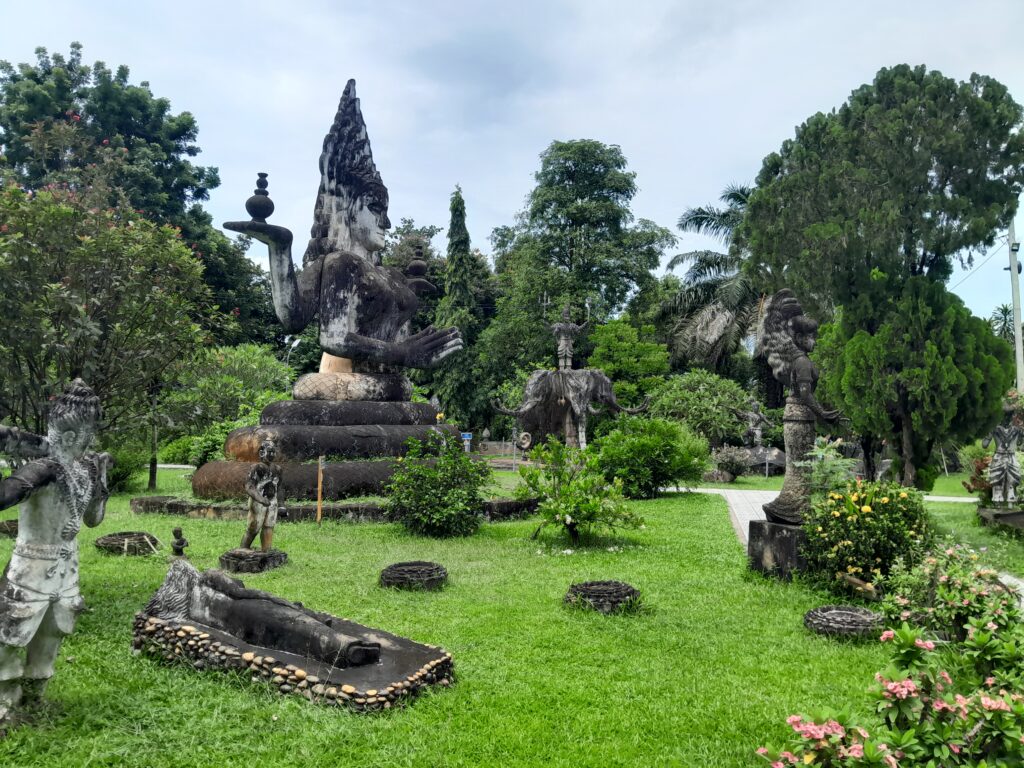
The park is an open-air sculpture garden, filled with figures from Hindu and Buddhist mythology: animals, gods, demons, saints, and Buddhas in all their forms. Towering over one side is an enormous Reclining Buddha, representing the Buddha’s entrance into Nirvana. From his repose, he seems to gaze out over the other statues, as though enjoying the view alongside the visitors.
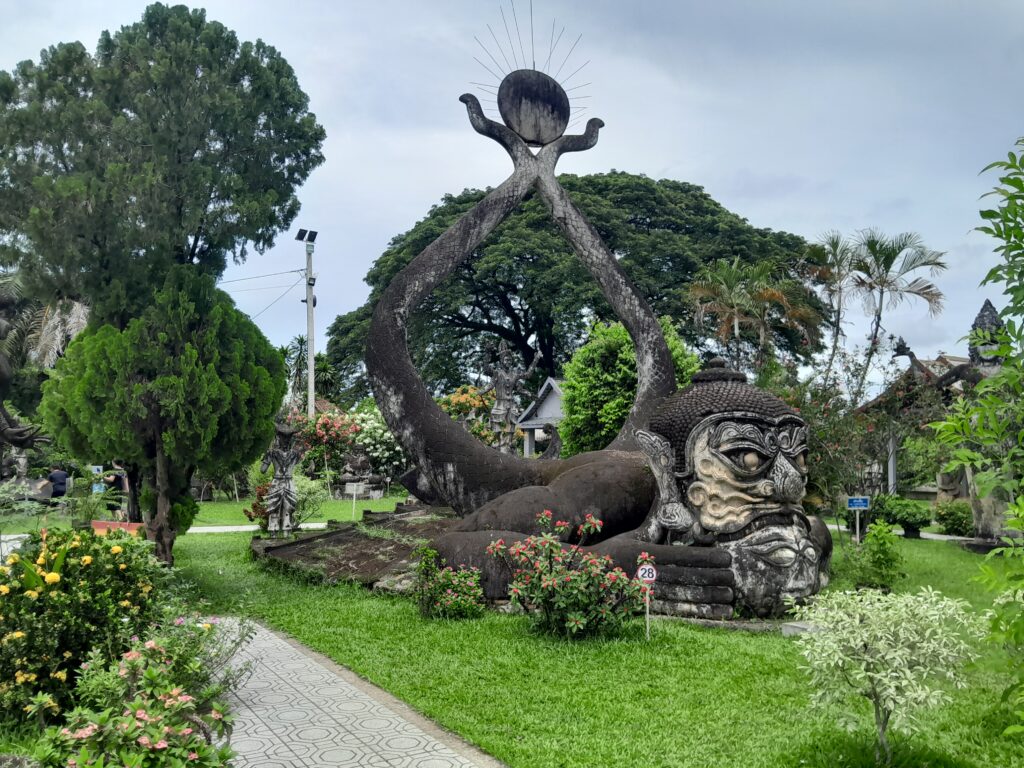
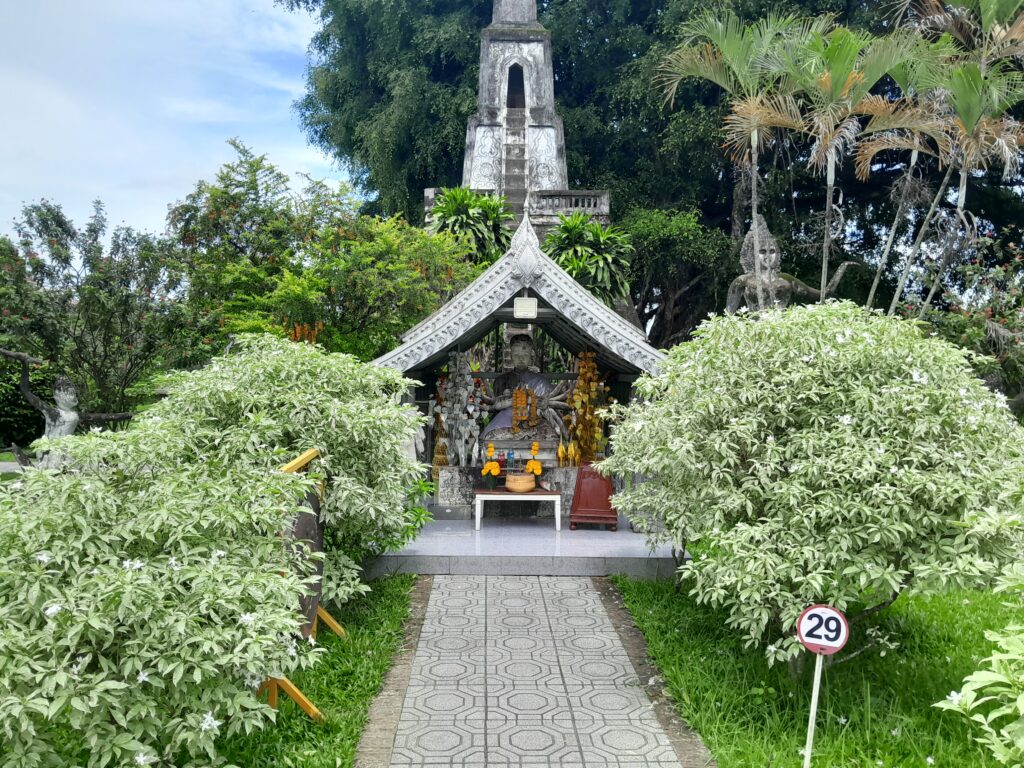
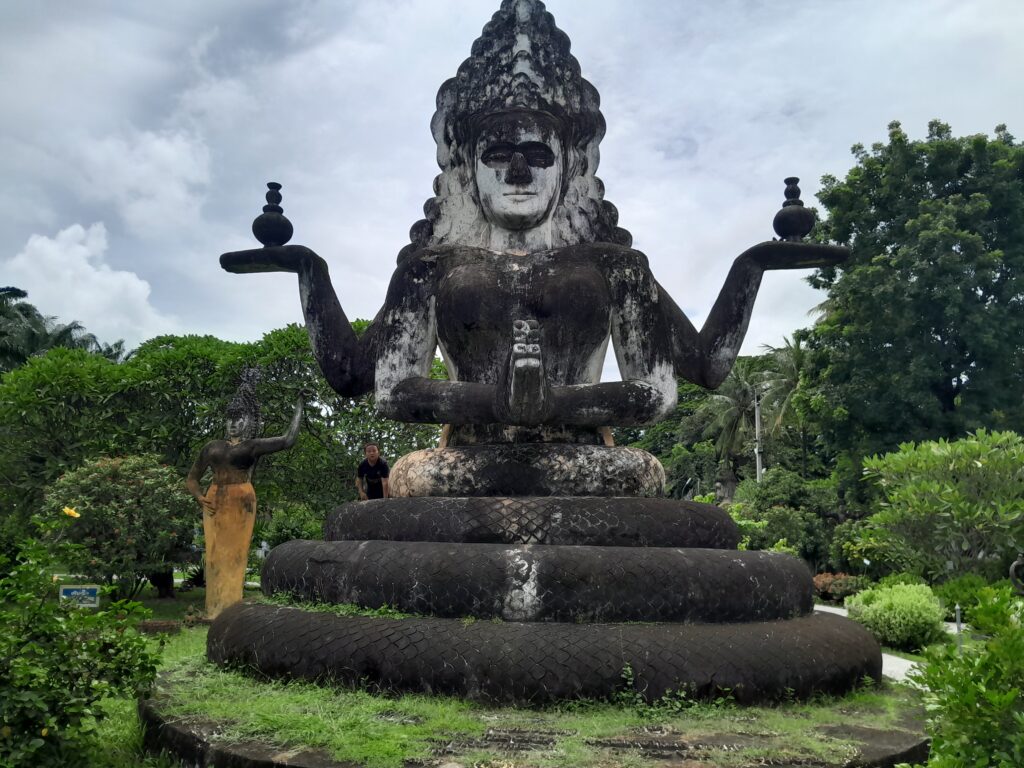
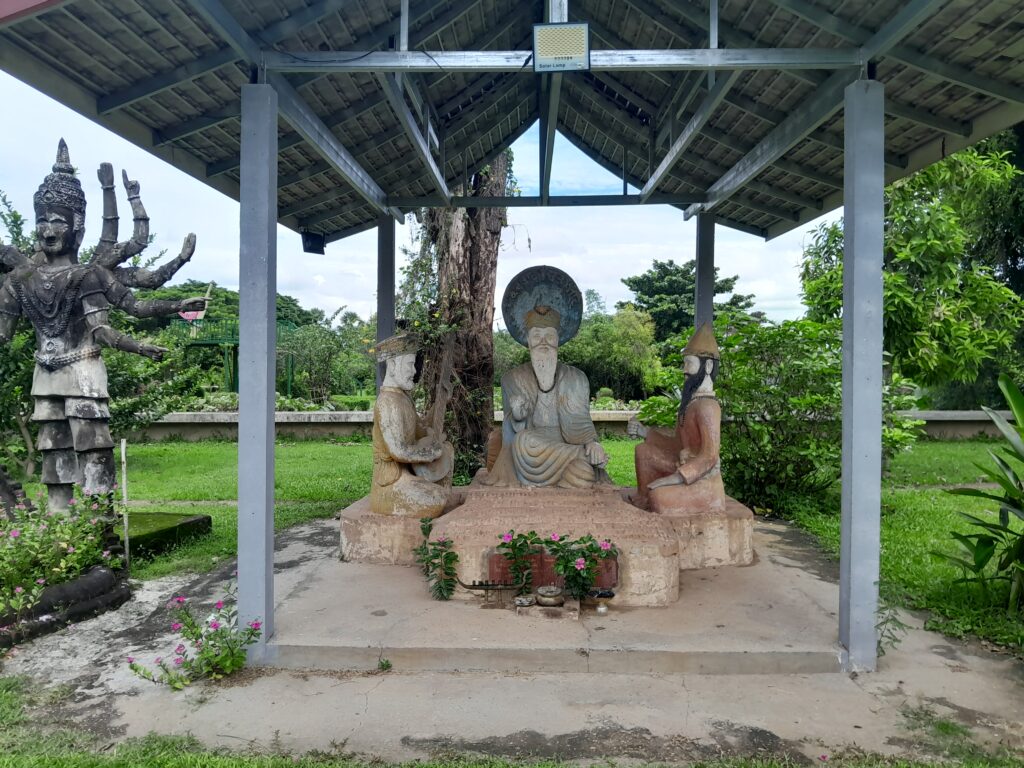
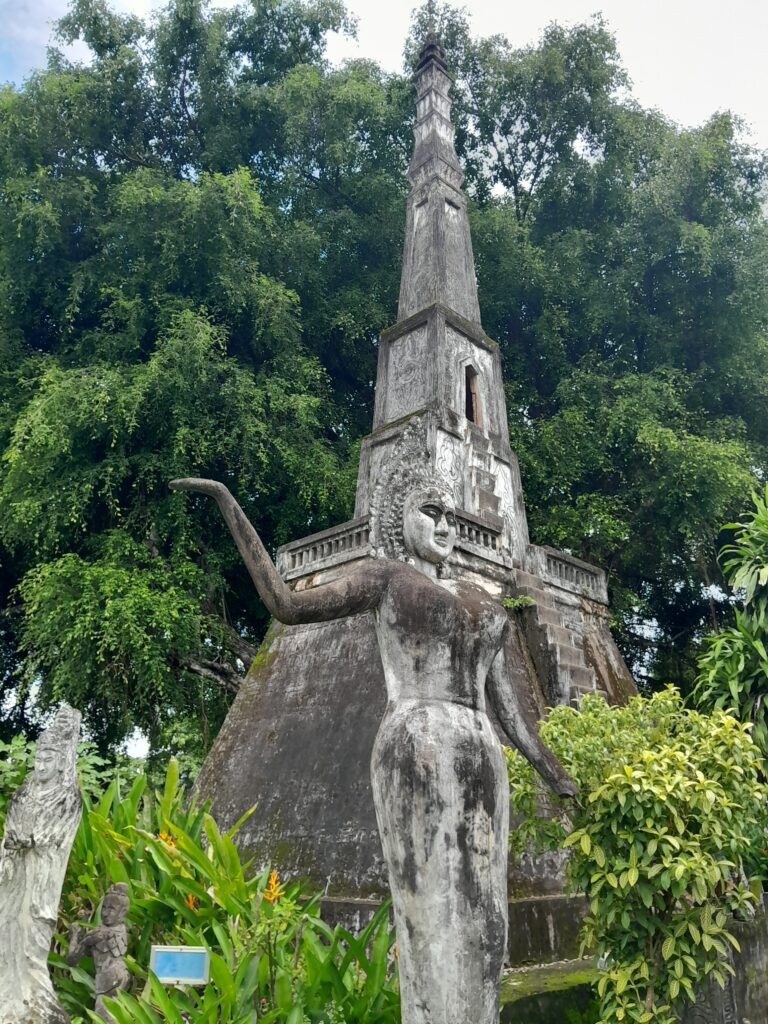
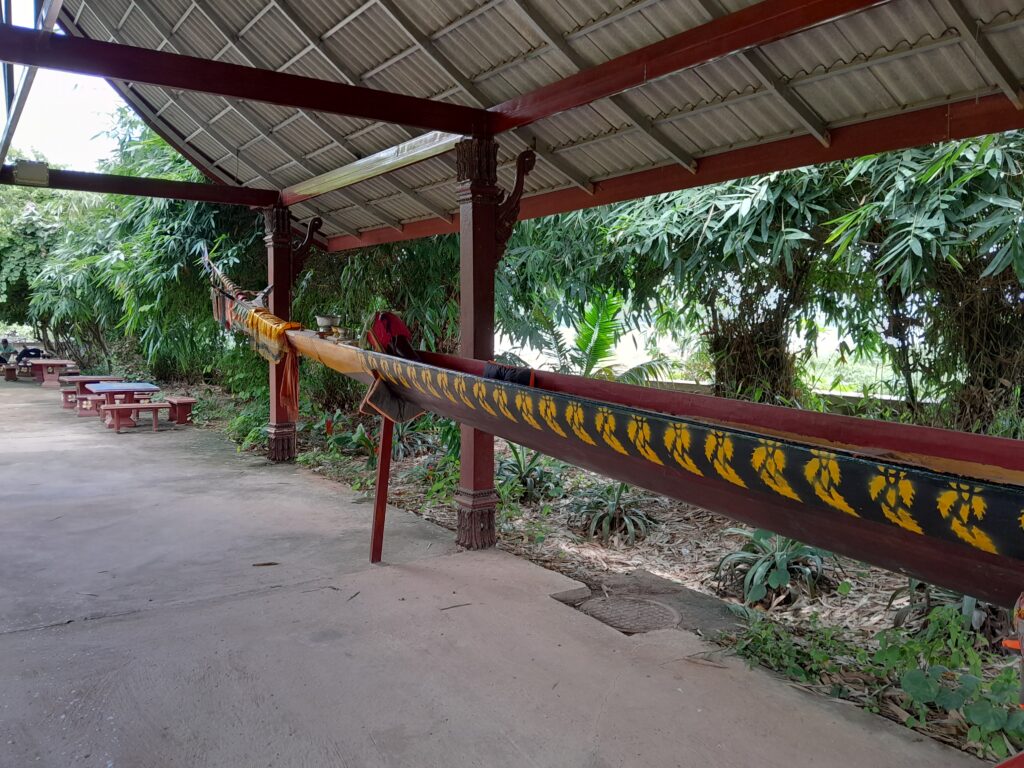
If you’re familiar with the Hindu pantheon, you’ll spot deities like Shiva, Vishnu, and others. Though even without that knowledge, the experience is magical. The park invites quiet reflection, and there’s a certain serenity to wandering among the statues beneath the sky.
Butterflies and Boats
While exploring the park, I finally managed to photograph a Blue Moon Butterfly, a species I’d seen several times before but could never quite capture. I also spotted a Mimic Butterfly, and a Peacock Pansy in its final days, its wings faded but still beautiful.
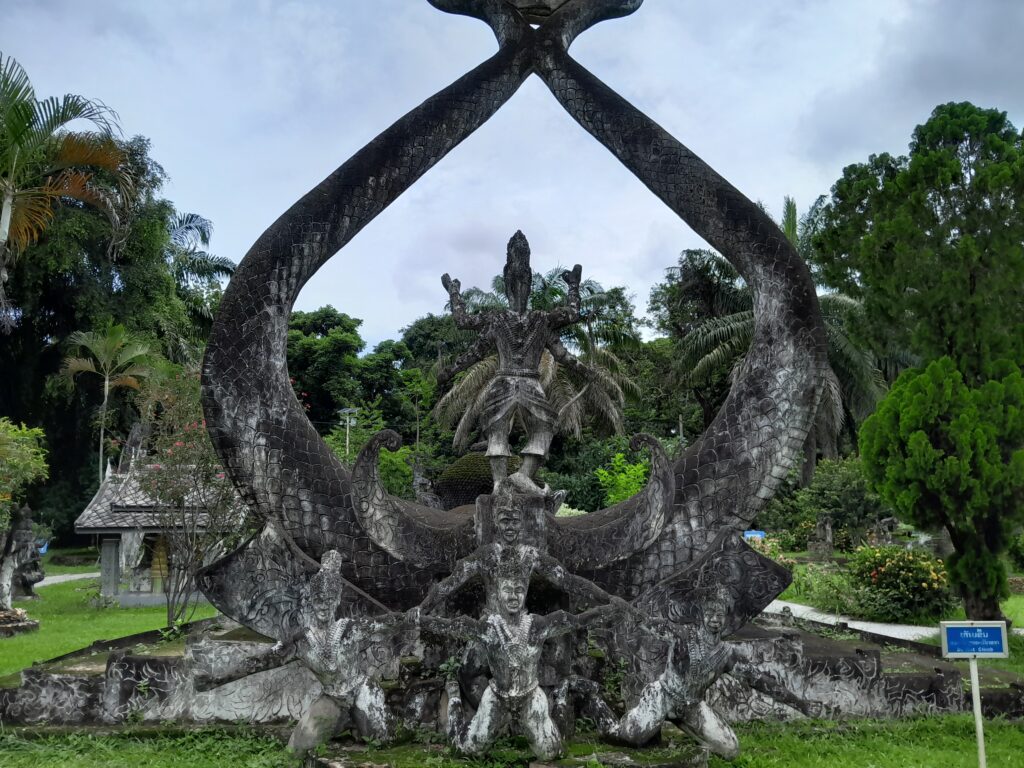
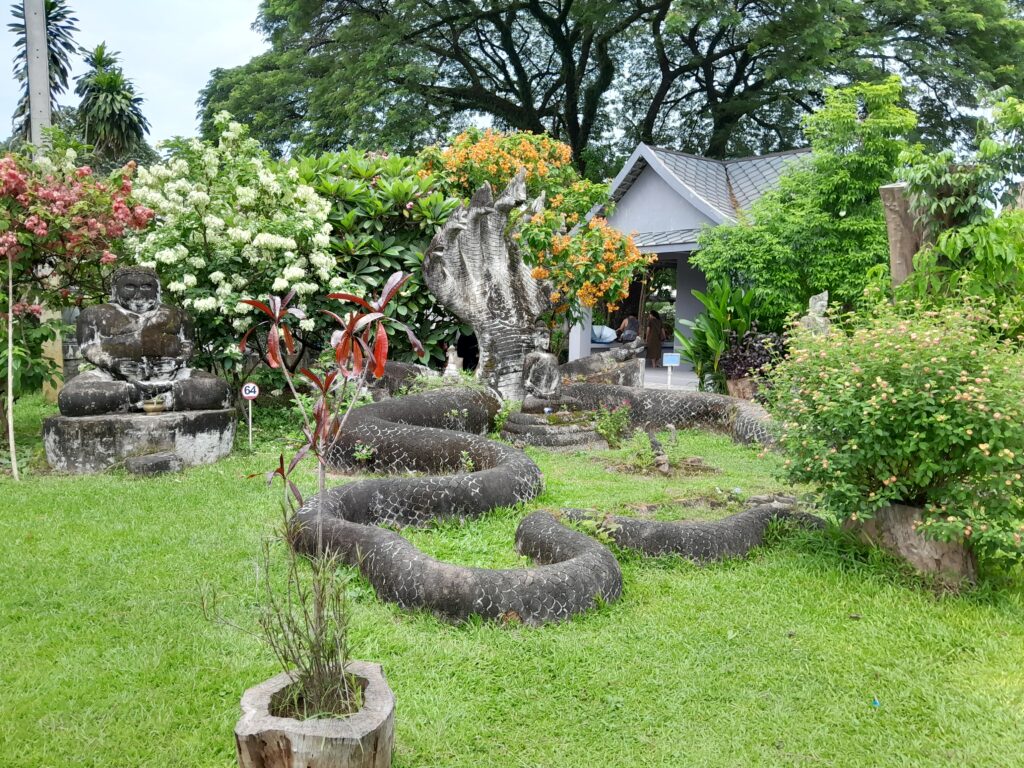
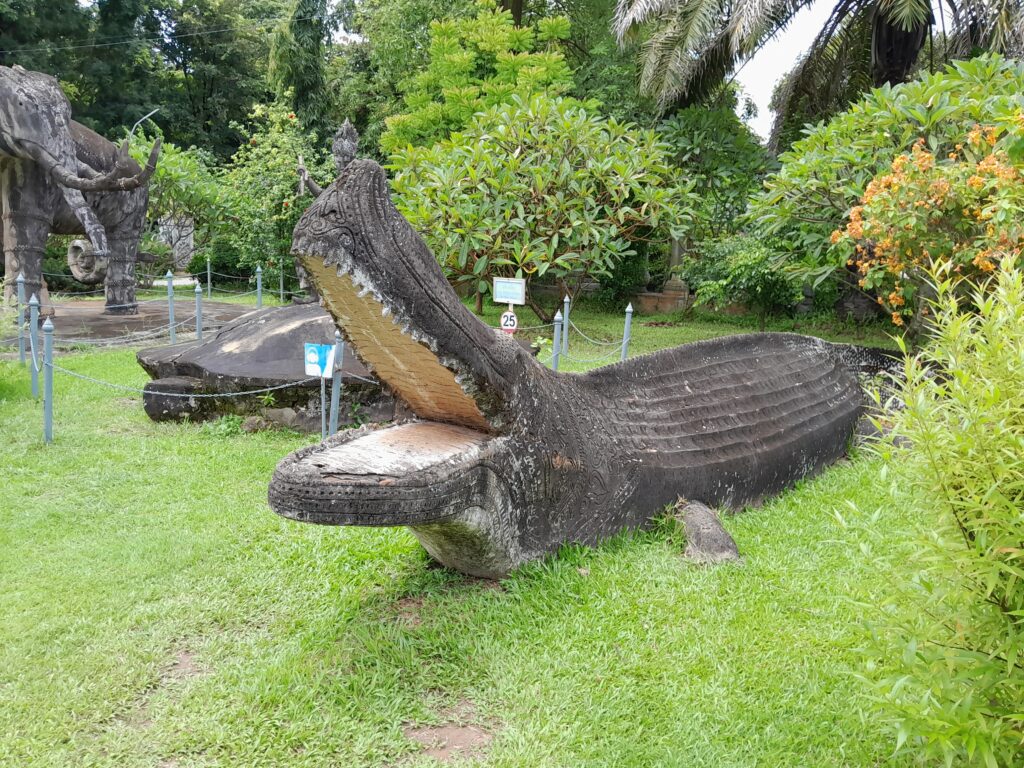
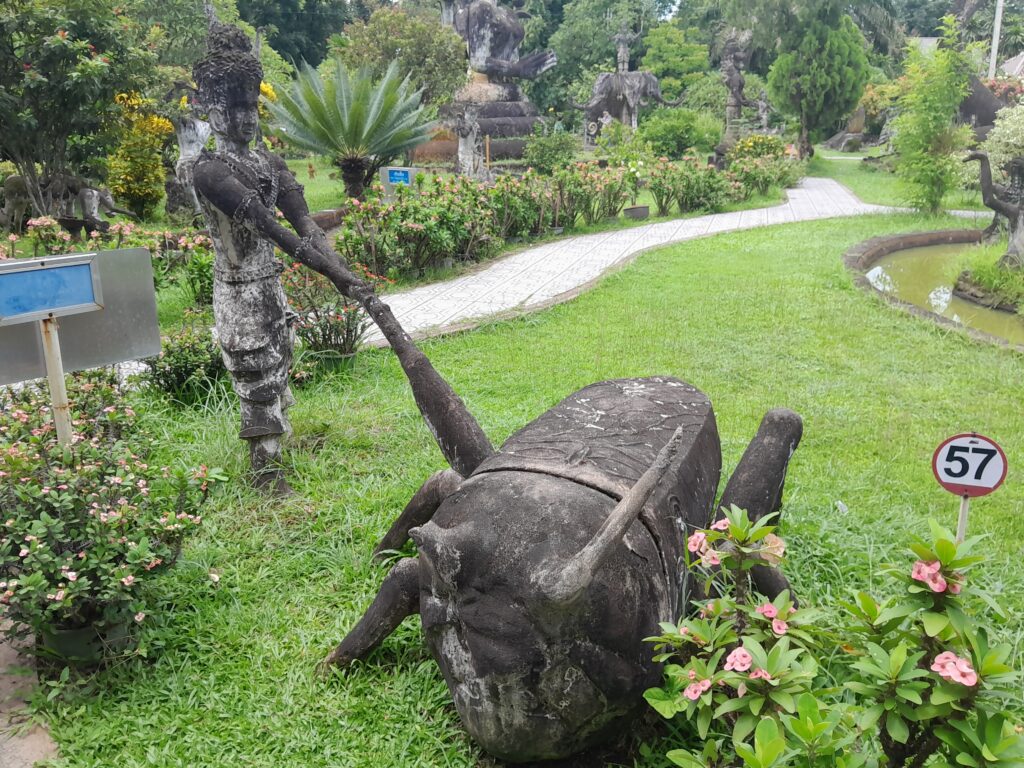

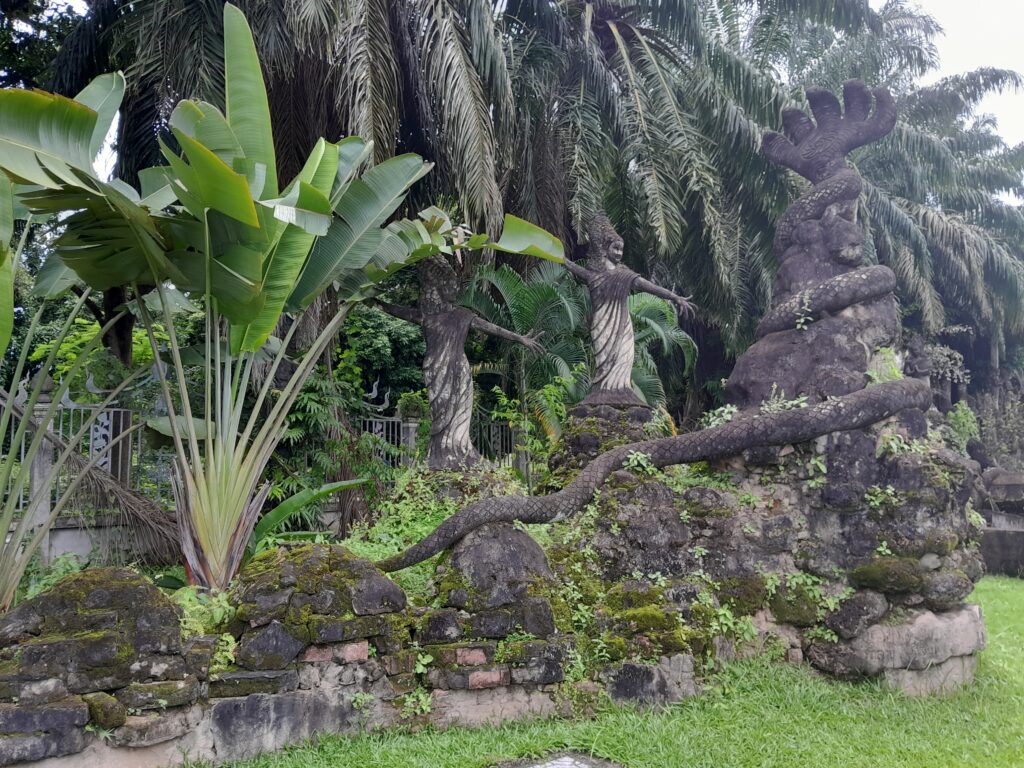
Toward the back of the park, you’ll find canoes used in Boun Suang Huea, the traditional Lao boat races that honour the Naga. A small restaurant also offers food and drink, though we only stopped in for water before heading back.
Divine Comedy
Though we saved it for last, my favourite part of the park is near the entrance. It’s a towering, pumpkin-shaped sculpture that you can go inside. In order to enter, you must crawl through the open mouth of a demon. Inside, the structure is divided into three levels that represent Hell, Earth, and Heaven.
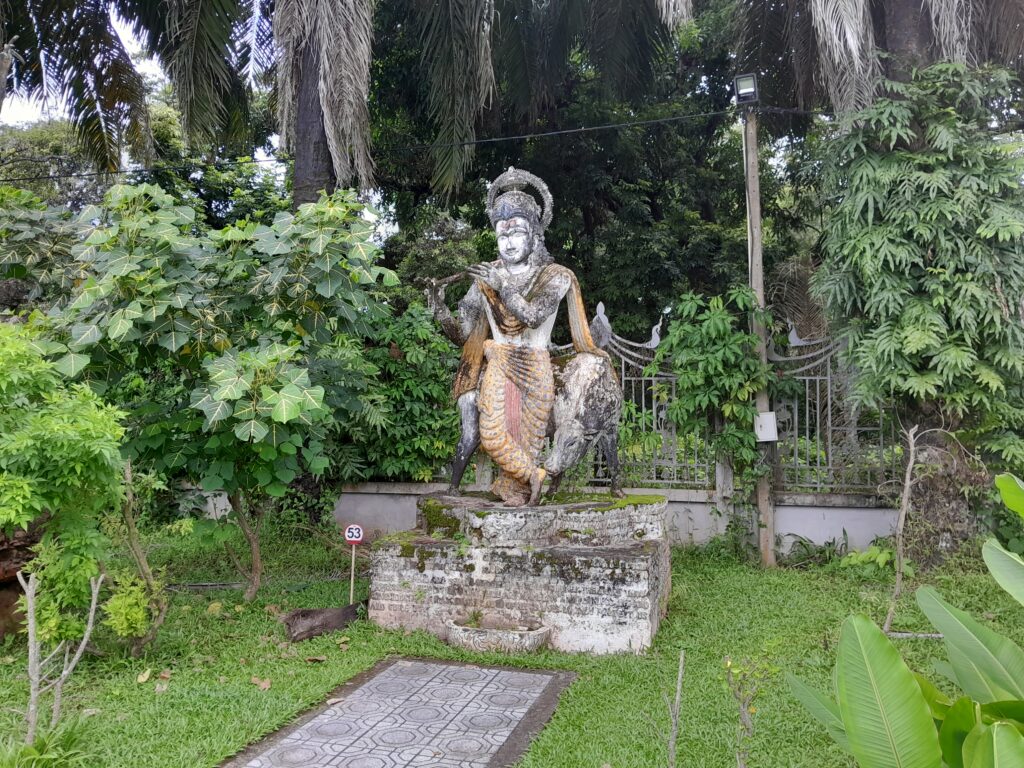
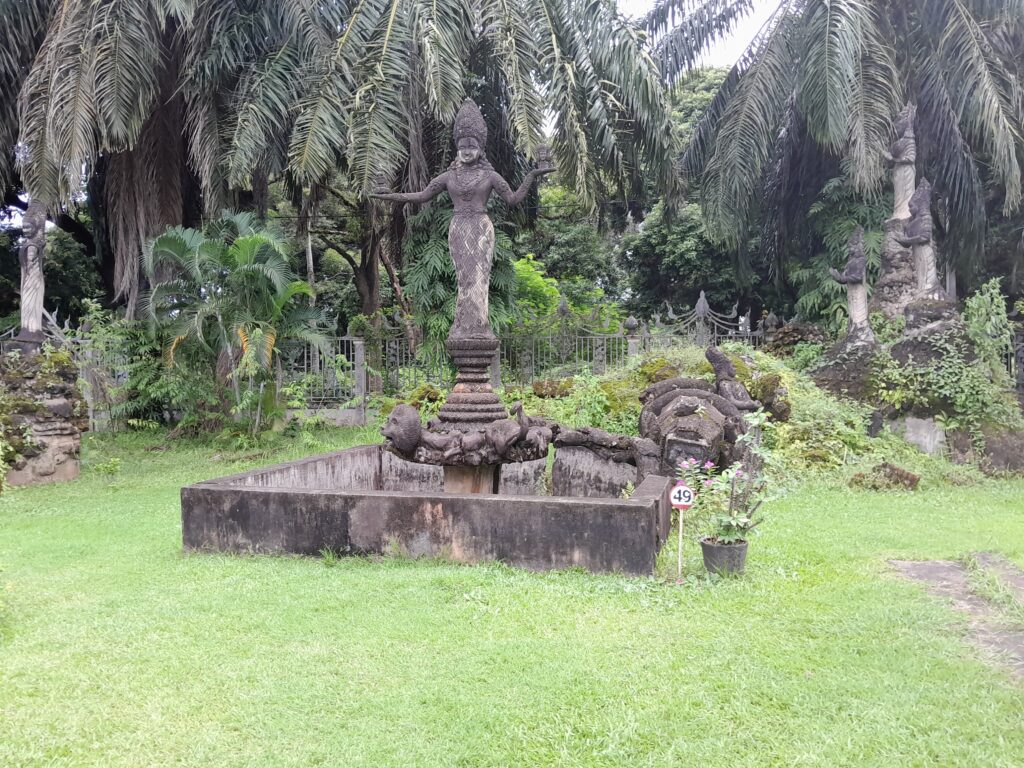
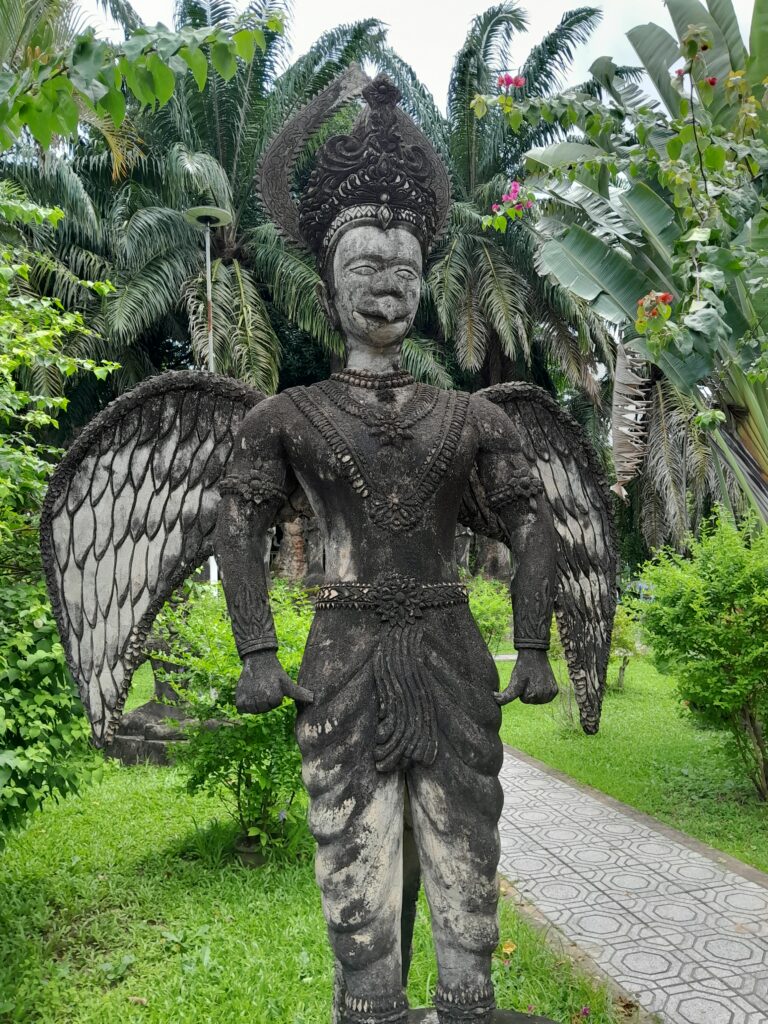
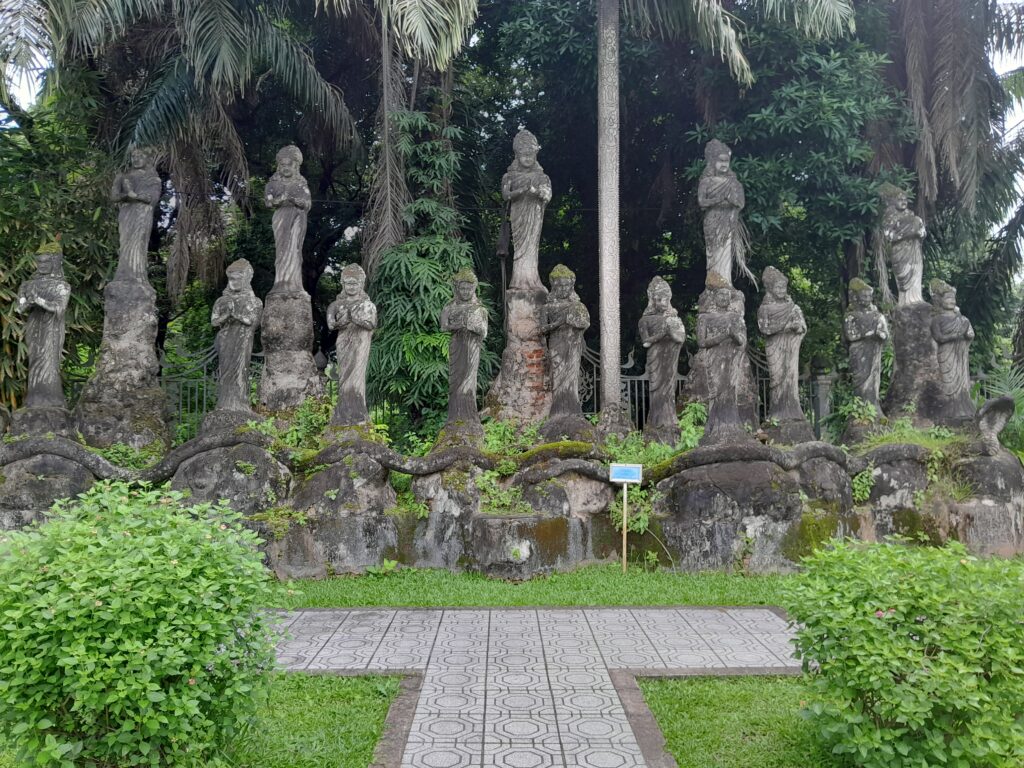
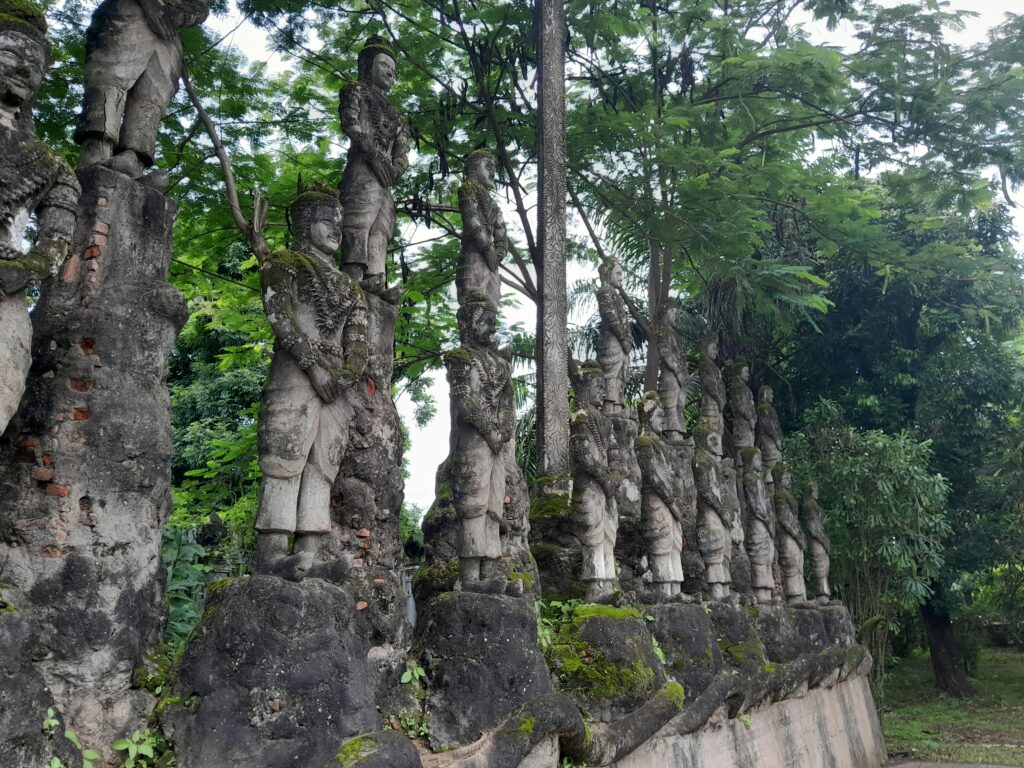
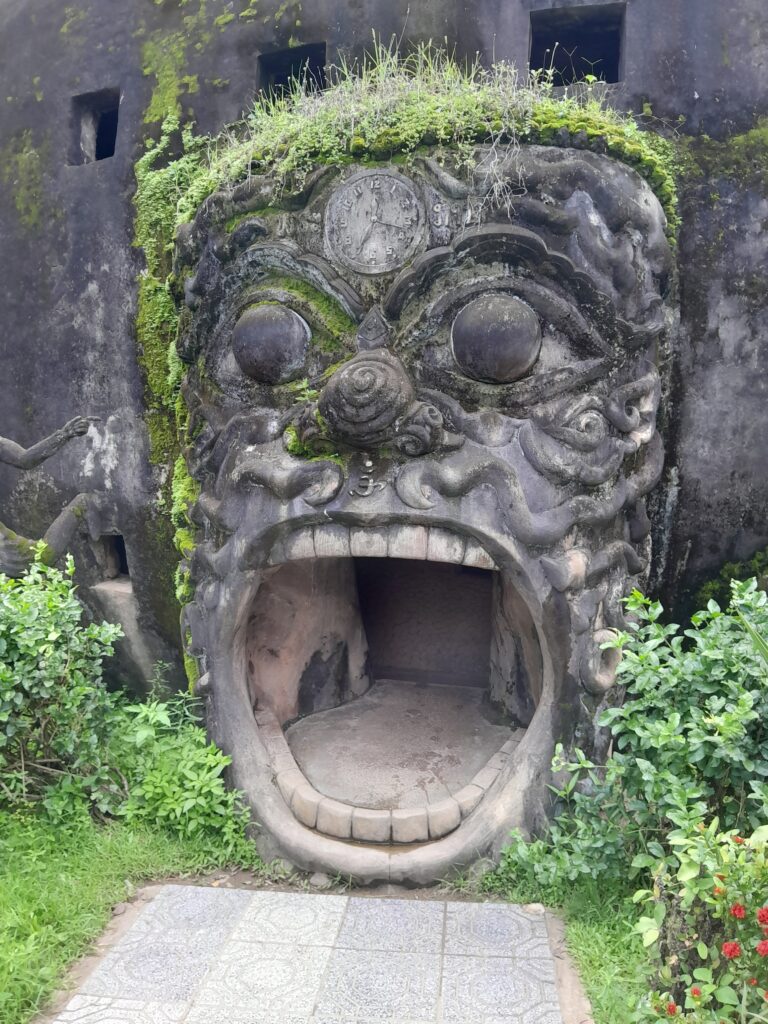
Descending to the lowest level, Hell, is dark and unsettling, filled with statues of serpent-demons and dark, twisted shadows. There is little, if any, natural light here. If you don’t have a flashlight, you may wish you brought one.
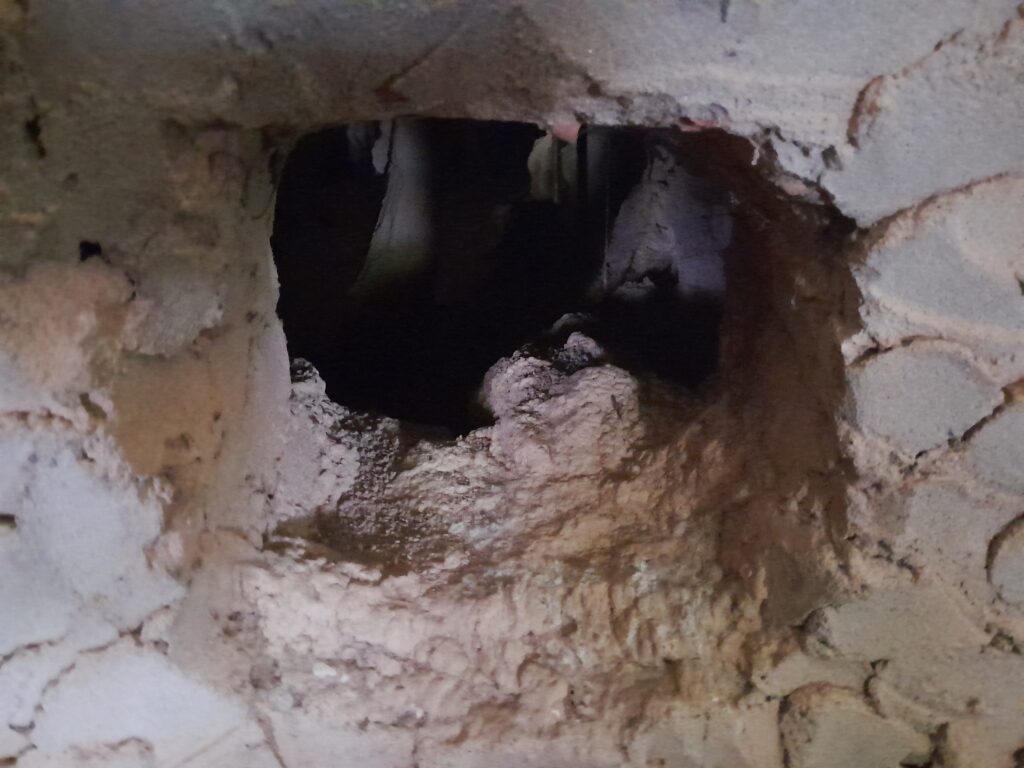
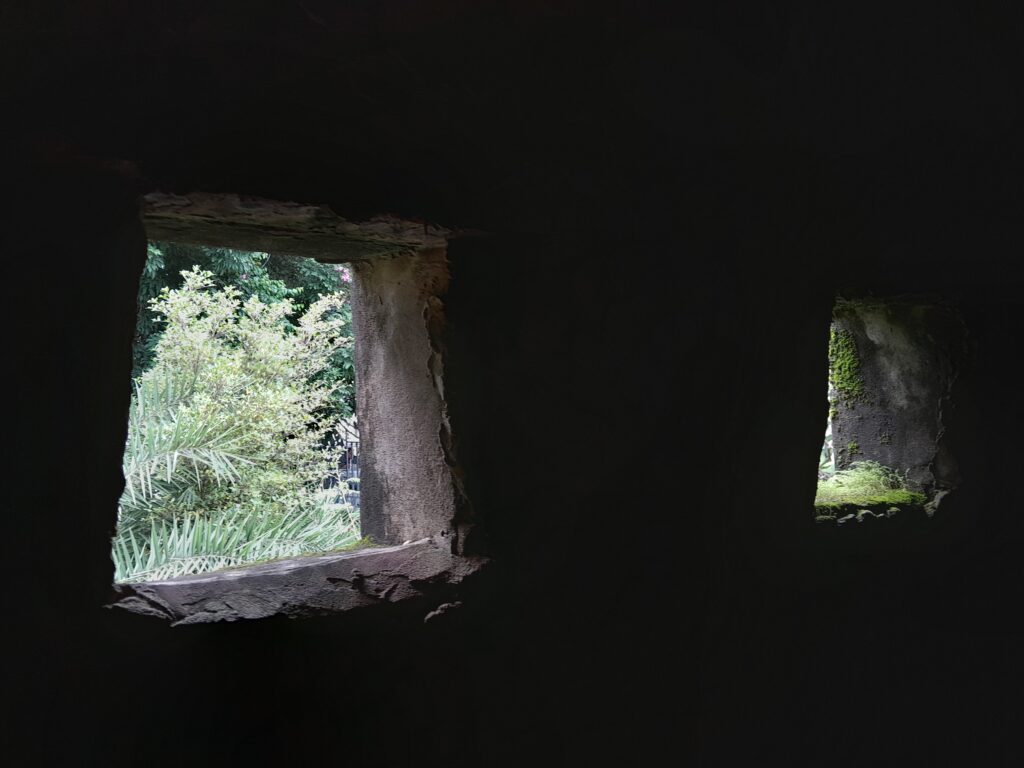
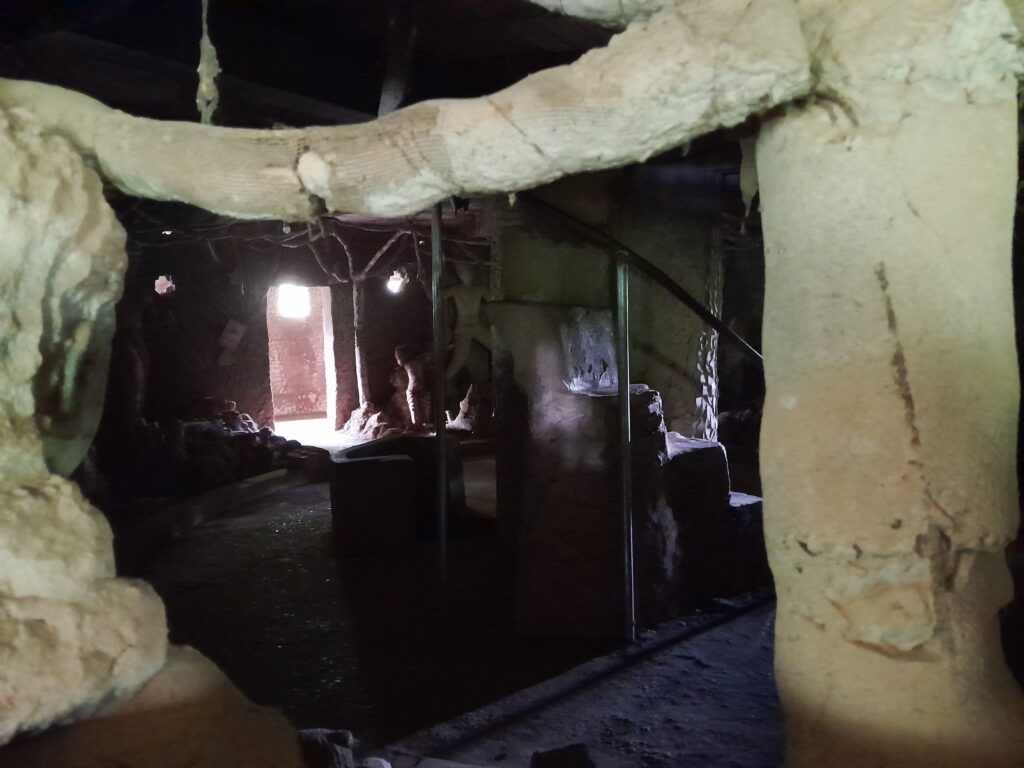
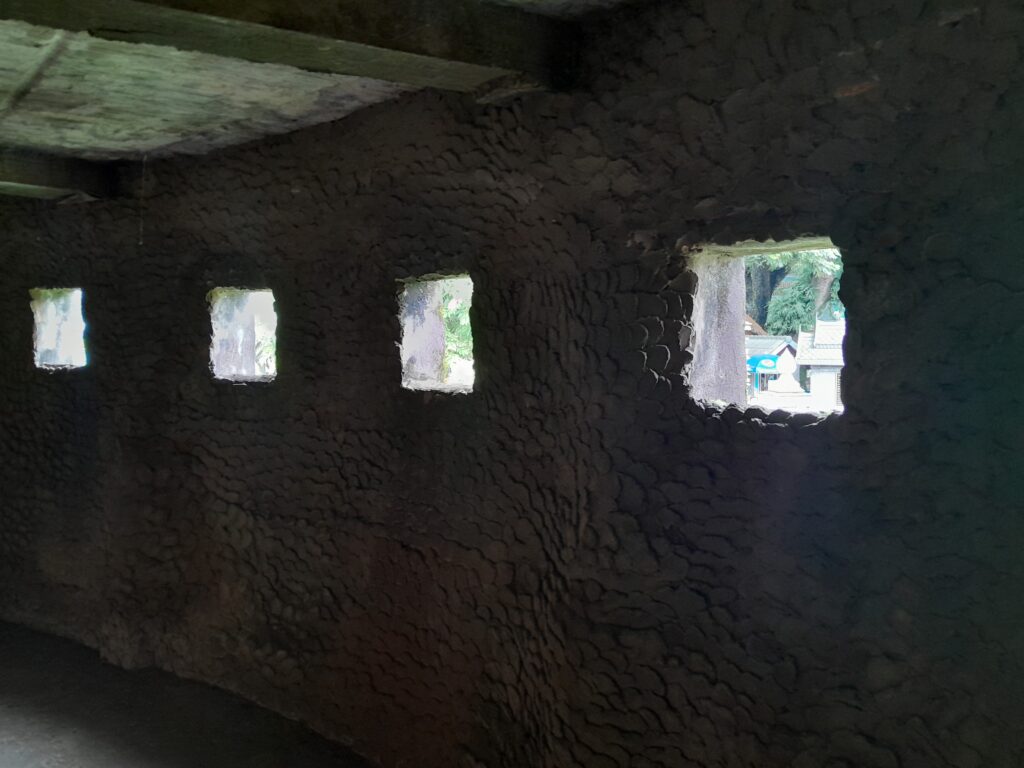
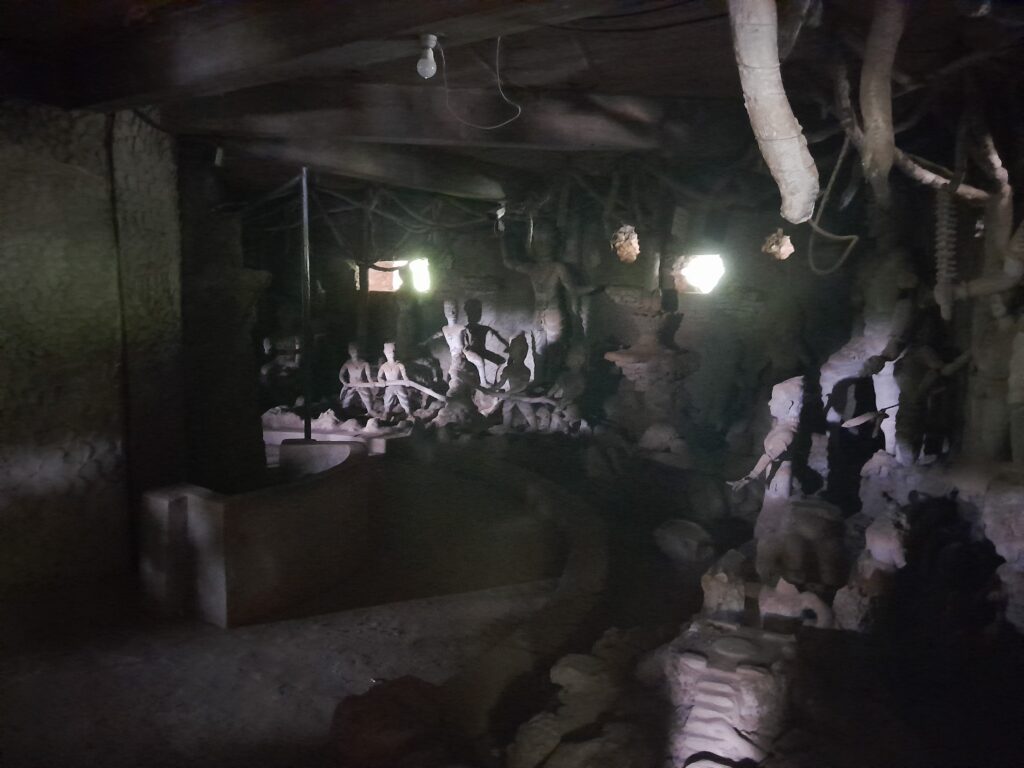
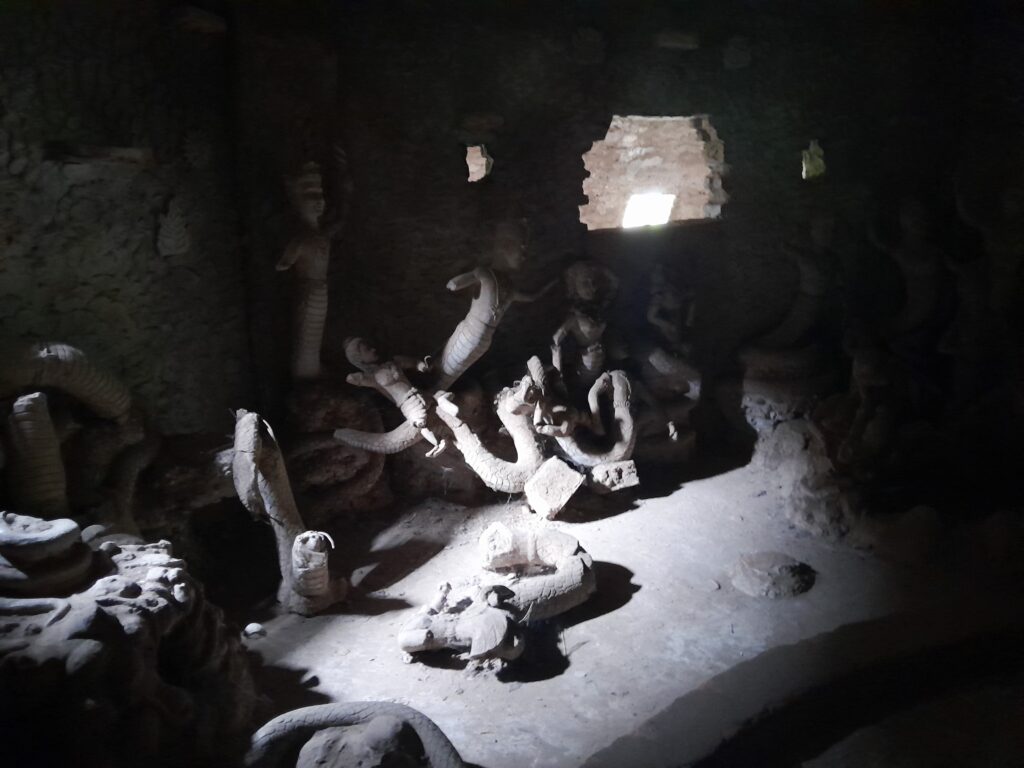
Earth, the middle level, is dimly lit through small windows. It’s populated by sculptures of men at work and war, scenes that reflect the everyday life of humanity.
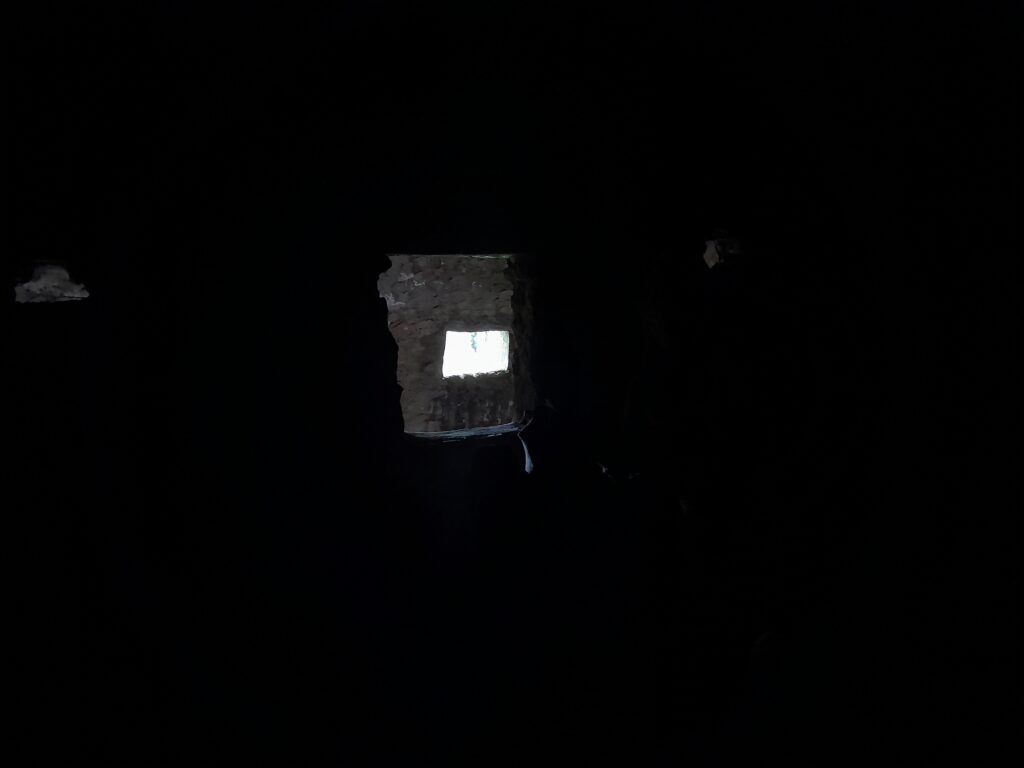
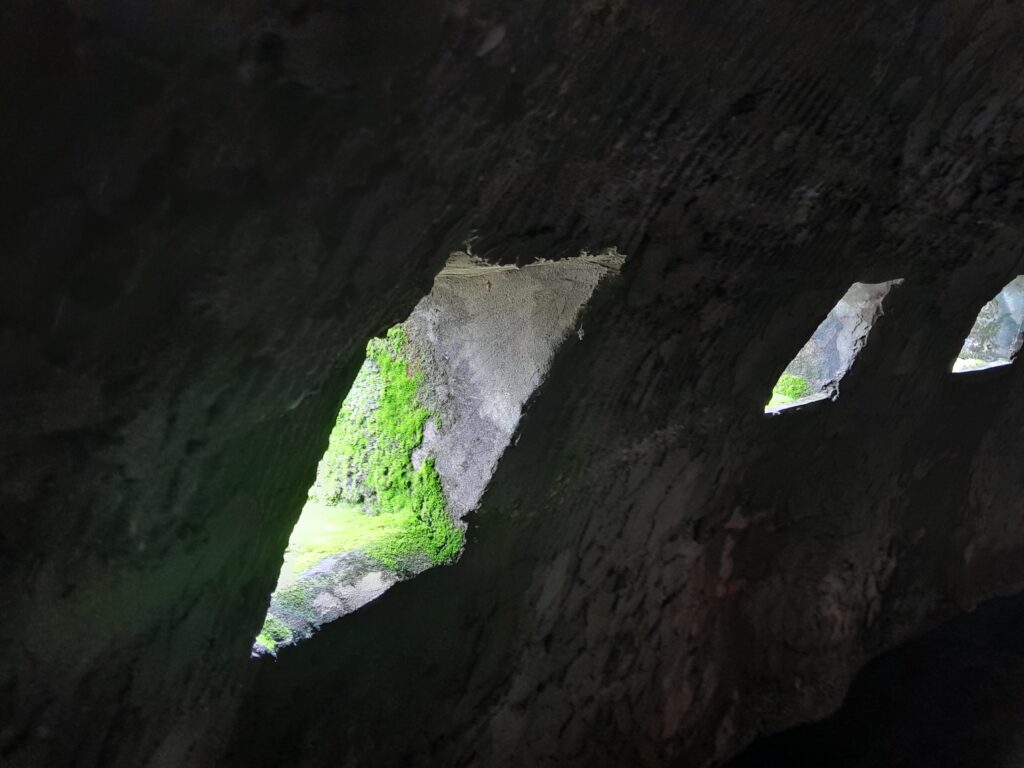
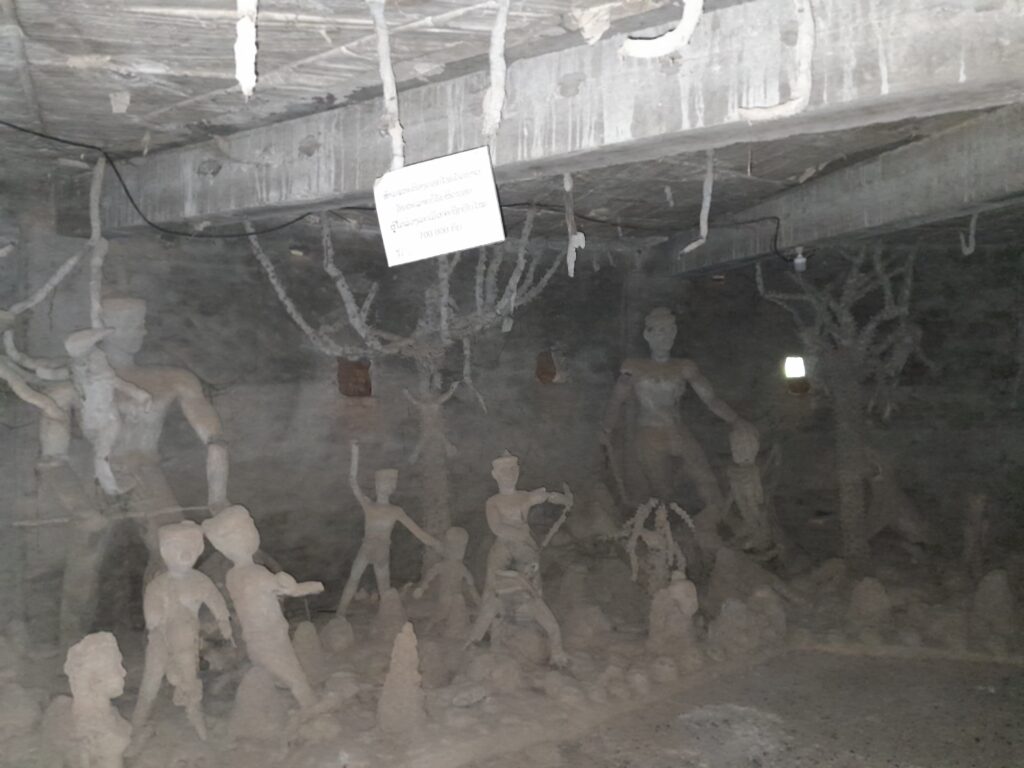
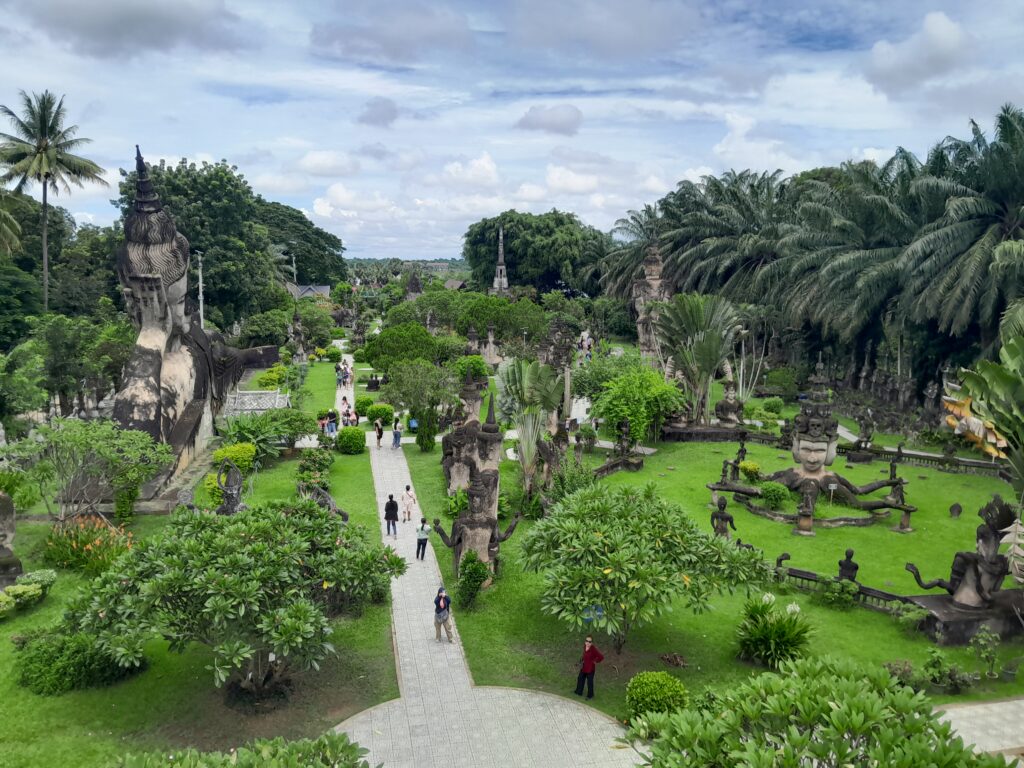
Ascending to Heaven brings you out onto the top of the pumpkin, where you’re rewarded with a sweeping panoramic view of the entire park. From here, even the Reclining Buddha feels small. This is the gods’ perspective, and it feels fitting after the symbolic climb.
If you’re spending any time in Vientiane, Buddha Park is a must-see. It’s a fusion of spiritual devotion and surreal art that leaves a lasting impression. Whether you go for the sculptures or just for a peaceful day out, you’ll find something here to remember.




One thought on “The Buddha Park in Vientiane”